#arti applicate italiane
Explore tagged Tumblr posts
Photo

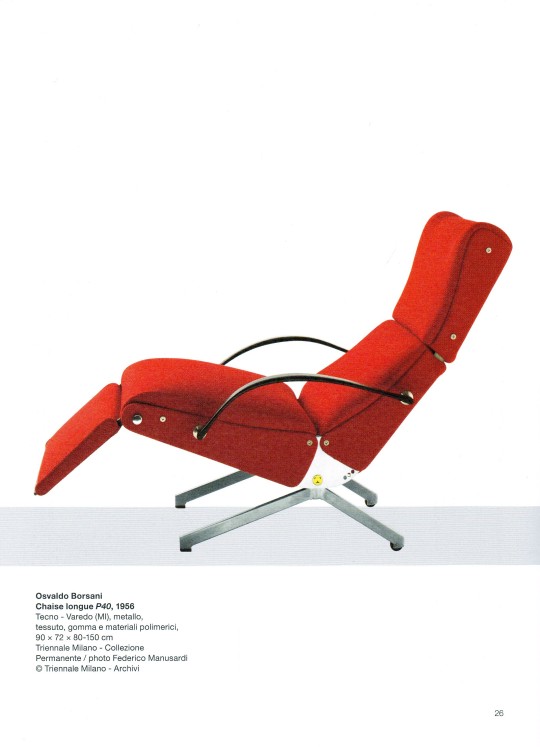
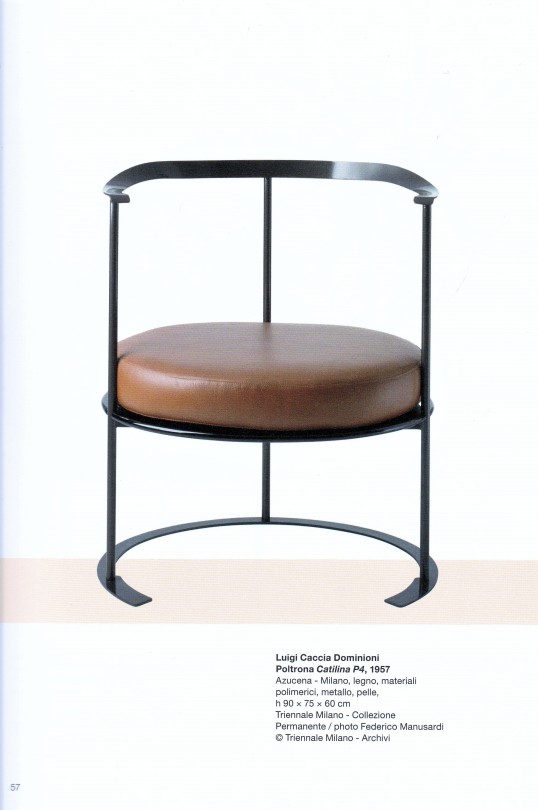


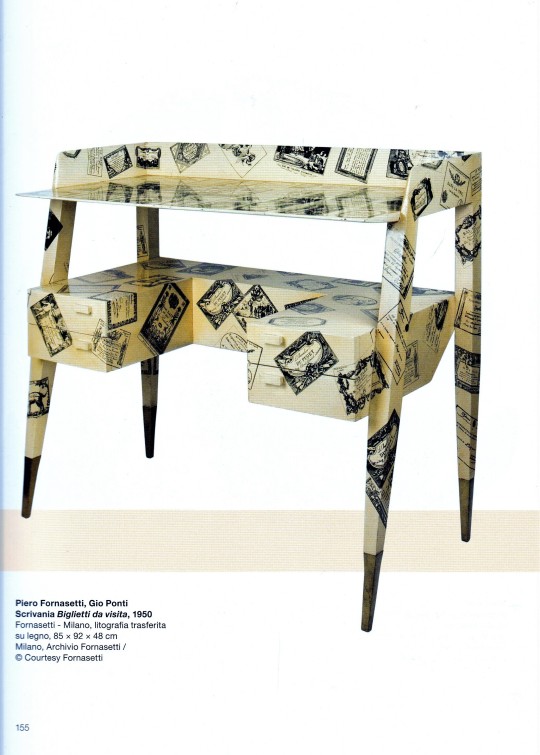


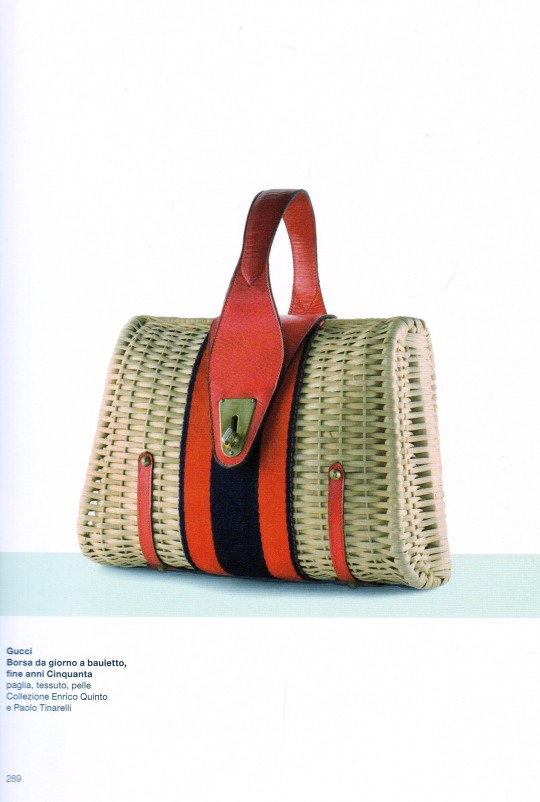
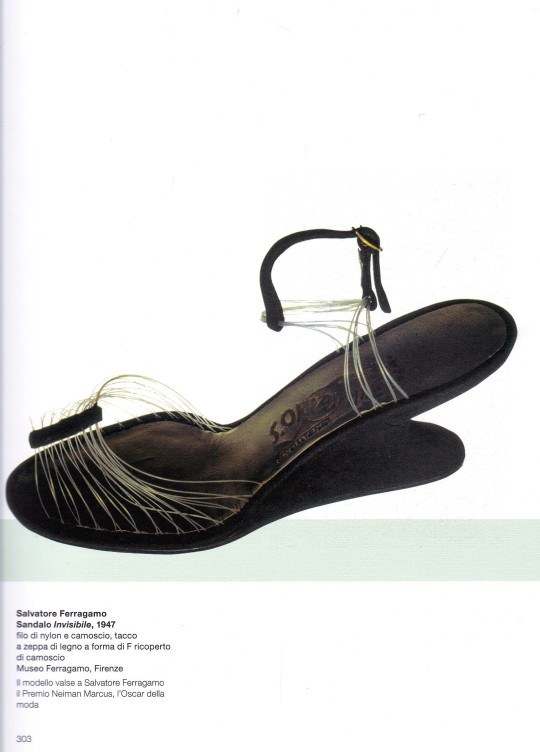
Italia Cinquanta moda e design
Nascita di uno stile
a cura di: Carla Cerutti, Enrico Minio Capucci, Raffaella Sgubin
antiga edizioni, Crocetta del Montello 2023, 364 pagine, 20 x 27 cm, Cartonato, ISBN 978-88-8435-368-9
euro 33,00
email if you want to buy [email protected]
Mostra aperta dal 21 marzo al 27 agosto 2023 presso Palazzo Attems Petzenstein Gorizia
Il mito dell’Italian Style prese corpo negli anni Cinquanta quando l’Italia, reduce dalle ferite della guerra, scelse di aggredire il futuro. Il volume racconta quel momento storico alla luce di due specifiche componenti: la moda e il design, comprendendo in quest’ultimo anche la tradizione delle arti applicate, punto di forza della produzione italiana, evoluzione della tradizione artigianale delle epoche passate. Si dipana, quindi, un itinerario tra le eccellenze più significative del periodo: dai mobili alle lampade, dalle ceramiche ai vetri, dai metalli alle stoffe d’arredamento.
Gli anni Cinquanta rappresentano anche per la moda un decennio di fondamentale importanza: con la prima sfilata fiorentina del febbraio 1951 nasce ufficialmente la moda italiana. Il volume dà conto di questa emozionante traiettoria: i più celebri modelli del periodo, abiti e accessori, firmati da talenti creativi destinati a grandi successi. Nella promozione della nascente moda italiana sul piano internazionale si miscelano sapientemente ingredienti unici, come il patrimonio culturale italiano, un’artigianalità di altissimo livello e la vetrina offerta dalle produzioni cinematografiche, dal momento che le migliori firme italiane annoverano tra la propria clientela le stelle del cinema hollywoodiano. Nasce così l’Italian Style, all’insegna dell’entusiasmo e della gioia ritrovata.
27/04/23
orders to: [email protected]
ordini a: [email protected]
twitter: fashionbooksmilano
instagram: fashionbooksmilano, designbooksmilano tumblr: fashionbooksmilano, designbooksmilano
#Italia Cinquanta#moda e design#exhibition catalogue#Italian Style#Palazzo Attems Petzenstein#Emilio Pucci#Gucci#Ferragamo#Emilio Schuberth#Fornasetti#Gio Ponti#Borsani#Caccia Dominioni#Lettera 22#Roberto Capucci#mobili#lamopade#ceramiche#vetri#metalli#stoffe arredamento#abiti#anni cinquanta#fashion books#design books#designbooksmilano#fashionbooksmilano
12 notes
·
View notes
Photo
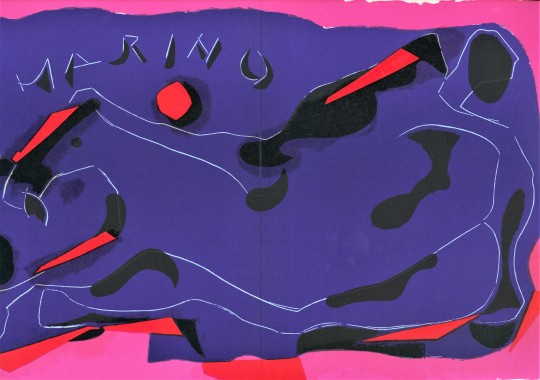
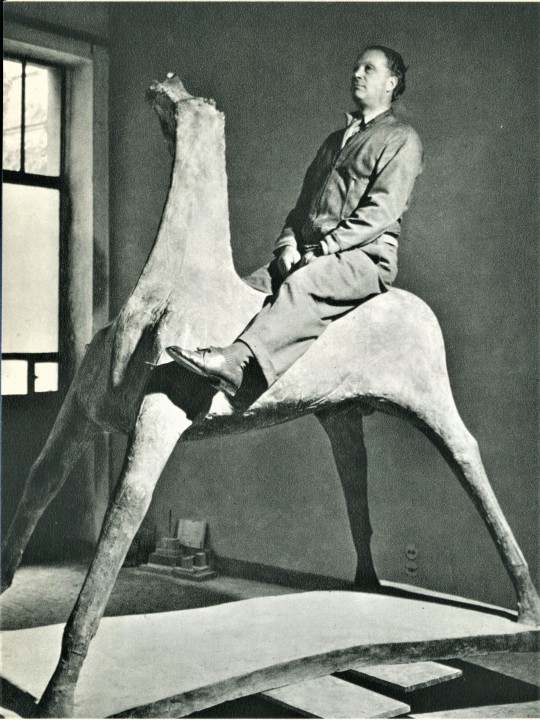



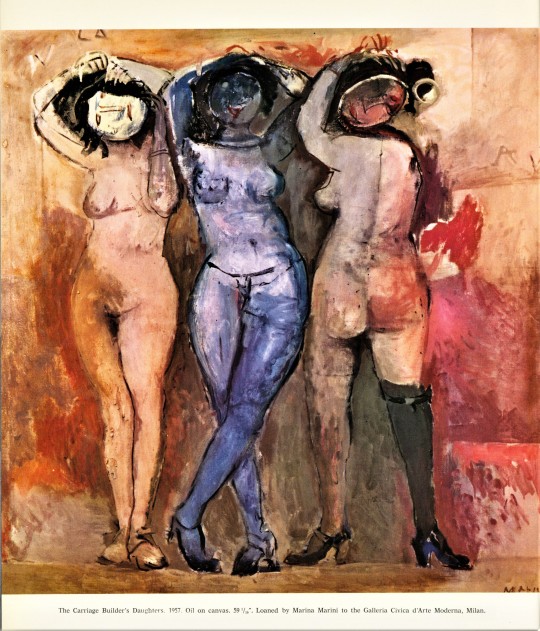
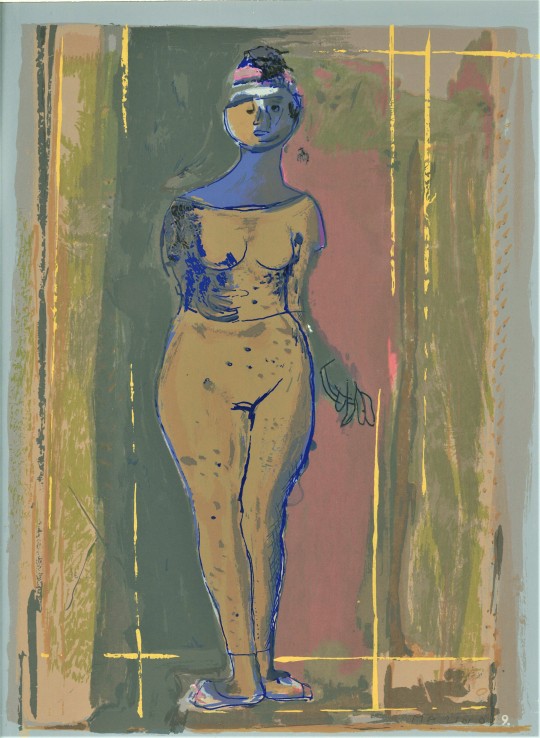


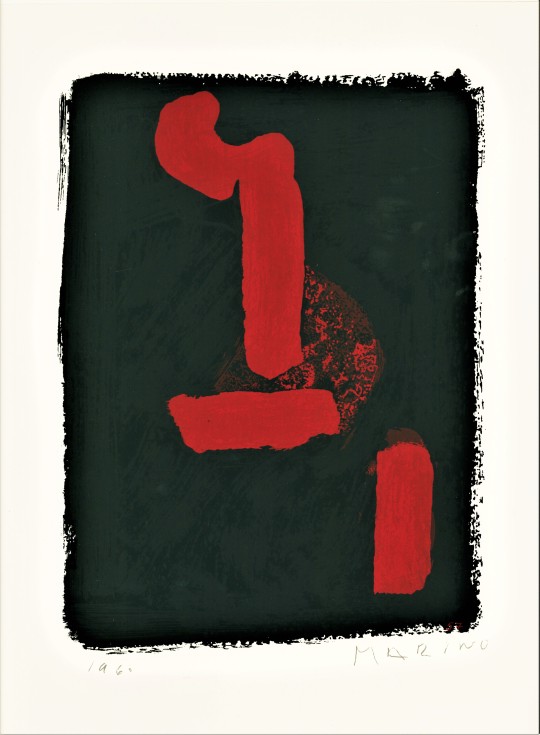
Milestone Monday, Part 2
On this day, February 27 in 1901, Italian sculptor, painter, and printmaker Marino Marini was born in Tuscany, Italy. Besides his long professional career as an artist, Marini was a professor of art at the Scuola d’Arte di Villa Reale in Monza, near Milan, from 1929 to1940 and then a sculpture professor at the Accademia di Belle Arti di Brera (now Brera Academy) in Milan from 1940 to 1970. Marini developed several themes in his work, including equestrian, nudes, portraits, and circus figures. He was deeply influenced by ancient Etruscan sculpture and according to museum curator Lucy Flint, “by interpreting classical themes in light of modern concerns and with modern techniques, he sought to contribute a mythic image that would be applicable in a contemporary context.”
The first five images shown here are from Homage to Marino Marini, edited by G. di San Lazzaro and translated by Wade Stevenson, with the first image being an original lithograph. It was published in New York by Tudor Publishing Company in 1975.
The last five images are from Marino Marini: A Suite of Sixty-three Re-creations of Drawings and Sketches in Many Mediums, with an introductory text by Werner Haftmann, and published in New York by Harry N. Abrams in 1968 in a limited edition of 2000 copies, of which ours is one of 500 specially numbered copies. The images were produced by the Günter Dietz Workshop in Lengmoos, Germany using a unique reproduction system that combines the silkscreen printing process with photochemical color separation.
View more Milestone Monday posts.
#Milestone Monday#milestones#Birthdays#Marino Marini#sculpture#lithographs#paintings#Homage to Marino Marini#G. di San Lazzaro#Wade Stevenson#Tudor Publishing#Marino Marini: A Suite of Sixty-three Re-creations#Werner Haftmann#Harry N. Abrams#Günter Dietz
18 notes
·
View notes
Text
Edina Altara

Edina Altara, poliedrica artista sarda del ventesimo secolo, è stata pittrice, ceramista, creatrice di moda, designer e pubblicitaria.
Ha illustrato una trentina di libri per l’infanzia e collaborato con numerose riviste e periodici.
La sua ricerca si inserisce in quel movimento di modernizzazione del primo Novecento in cui l’arte ha incontrato la produzione industriale e l’espressività popolare.
A diciassette anni aveva già ideato una serie di balocchi di cartoncino e non ne aveva ancora venti quando il re Vittorio Emanuele III acquistò la sua opera Nella terra degli intrepidi sardi. Il collage, noto anche col titolo Jesus salvadelu è oggi esposto al Quirinale.
Nata a Sassari, il 9 luglio 1898 in una famiglia agiata, fin da bambina aveva mostrato una notevole propensione per il disegno, i colori e l’uso della carta.
Amava sperimentare e, in modo autonomo e da autodidatta, sviluppò presto un notevole senso estetico e una manualità allenata al ritaglio prima ancora che al disegno.
Si interessava di antiquariato, ma anche delle nuove tecniche produttive, esercitandosi in mille piccole attività, dal ripristino di oggetti antichi alla creazione di complementi d’arredo, alla decorazione, alla pittura. Utilizzava tessuti, carte colorate e frammenti di vetro con cui componeva scene e figure.
Il suo debutto avvenne nel 1917 con la mostra Società degli amici dell’Arte di Torino, dove il suo collage venne notato e comprato dal re.
Trasferitasi a Casale Monferrato, collaborava con diverse riviste quando, nel 1922 conobbe e sposò Vittorio Accornero de Testa, affermato scrittore, disegnatore e scenografo. Firmandosi Edina e Max Ninon, insieme, diedero vita a illustrazioni, cartoline, calendari, prodotti pubblicitari e lavori dal gusto Decò. Lei realizzava i personaggi e lui gli ambienti.
Il suo talento spaziava dal disegno alla moda. Dopo la separazione dal marito nel 1934, aveva aperto un atelier nella sua casa di Milano, dove fioccarono le richieste per lavori artistico di ogni sorta.
Si era anche dedicata con grande successo alla decorazione di maioliche prodotte da alcune ditte faentine e torinesi; progettava ciò che altri avrebbero poi riprodotto.
Durante la guerra, insieme alle sorelle, aveva creato una società di decorazione e progettazione di oggetti in ceramica che è stato un importante esempio di imprenditoria femminile, capace di consentire proventi sicuri in un periodo difficile come quello bellico.
Edina Altara ha disegnato per tutte le più importanti pubblicazioni femminili italiane. Il suo stile colto e informato, spaziava dalle curve flessuose del Liberty alla geometrie del Decò, fino a riferimenti più arcaici al mondo delle tradizioni sarde e alle figure ieratiche di Massimo Campigli, reinterpretate in un’opera emblematica come Penelope, un olio su masonite databile agli Anni Cinquanta.
Ha collaborato con tutte le più importanti riviste, tra cui Grazia e Bellezza, diretta da Gio Ponti, con cui ha lavorato a lungo, soprattutto nel design, aiutandolo nei progetti di arredamento. Tra questi spiccano gli allestimenti di cinque grandi transatlantici italiani tra i quali l’Andrea Doria e il Conte Grande, per la sala ristorante di quest’ultimo hanno dipinto, a quattro mani, il pannello su vetro Allegoria del viaggiare (1950).
Quando il dibattito generale riprese a considerare secondarie le arti applicate, la sua poliedrica attività venne declassata a mera produzione decorativa.
Negli ultimi anni riceveva spesso commissioni per soggetti molto convenzionali, ai quali si adattava suo malgrado, pur di lavorare.
Si è spenta nella sua amata Sardegna, a Lanusei, l’11 aprile 1983.
Dopo la sua morte il suo nome era sparito dalla memoria collettiva, di recente, però, grazie al lavoro del pronipote, il giornalista Federico Spano, titolare dell’Archivio Altara, le sono state dedicate diverse retrospettive, che hanno saputo mettere l’accento sulla sua esperienza di imprenditorialità creativa e le utili ripercussioni per le nuove generazioni.
0 notes
Text

📚Niccolò di Bernardo dei Machiavelli, known simply as Niccolò Machiavelli, was an Italian writer, philosopher, historian, playwright, politician and diplomat, secretary of the second chancellery of the Florentine Republic from 1498 to 1512.
What is Machiavelli famous for?
Machiavelli is the founder of modern political science.
He delimits the field of this science by distinguishing it from that of other sciences, such as ethics.
Political theory in the Middle Ages was subordinated to ethics, the prince who acted according to ethics was judged positively (e.g. specula principalis).
📚 He was a far-sighted man and in his study of human history, he was able to classify and indicate the behaviors of the dominant classes that would influence the future of all humanity.
In fact, in his book "The Prince" he exposed the methods followed for centuries by famous statesmen, and his main maxims are so current that they seem written today.
📚The term comes from Machiavelli
"Machiavellian", which refers
to the behaviors and strategies of those who do not shy away from using deception and violence to obtain political advantages, and is more generally used to connote cunning and devious ways of thinking and acting, or unscrupulous people.
(E.g. politics m.; arts m.; a plan m.; a plot m.; a Machiavellian mind).
📚🔍For an interesting insight
historical/cultural with related application, see the article:
"Politics and its fruit:
World War I" where Machiavelli's 7 main maxims are reported.
For convenience you can also find the link in my Threads profile 📚
📌
📚Niccolò di Bernardo dei Machiavelli, noto semplicemente come Niccolò Machiavelli, è stato uno scrittore, filosofo, storico, drammaturgo, politico e diplomatico italiano, segretario della seconda cancelleria della Repubblica Fiorentina dal 1498 al 1512.
Per cosa è famoso Machiavelli?
Machiavelli è il fondatore della moderna scienza politica. Egli delimita il campo di tale scienza distinguendolo da quello di altre scienze, come l'etica. La teoria politica nel medioevo era subordinata all'etica, era giudicato positivamente il principe che agiva secondo l'etica (es. specula principis).
📚Fu un uomo lungimirante e nel suo studio della storia umana, seppe classificare e indicare i comportamenti delle classi dominanti che avrebbero influito sul futuro dell'intera umanità.
Infatti nel suo libro "Il Principe" espose i metodi seguìti per secoli da famosi statisti, e le sue principali massime, sono talmente attuali che sembrano scritte oggi.
📚Da Machiavelli deriva il termine
"machiavellico", che si riferisce
ai comportamenti e alle strategie di chi non rifugge dall'usare l'inganno e la violenza per ottenere vantaggi politici, ed è più in generale usato per connotare modi di pensare e di agire astuti e subdoli, o persone prive di scrupoli.
(Es.politica m.; arti m.; un piano m.; un complotto m.; una mente machiavellica).
📚🔍Per un interessante approfondimento
storico/culturale con relativa applicazione, vedere l'articolo:
"La politica e il suo frutto:
la I guerra mondiale" dove sono riportate le 7 principali massime di Machiavelli.
Per comodità trovi il link anche nel mio profilo Threads 📚
📌
0 notes
Text
Trash Heap Souvenir No. 8
Borders, Love & Rock & Roll
“Don’t judge a book by its cover”.
My ass, don’t judge a book by its cover. I ordered tons of albums from Columbia House just because of their cover. Pere Ubu’s MODERN DANCE? Because of the cover. Bauhaus SINGLES? Because of its cover. Pulp? Because the DIFFERENT CLASS cover looked so damn rad.
There was no way of sampling this stuff. And as history proved, if a band cared enough about its visual representation then chances are it matched their sound. And sometimes a great album cover enhances the music. It affected everything. This whole package. And Pulp. Looked. Rad. As. Fuck.
As soon as I got the CD I flipped through its booklet. The sets the band mates posed in were in color, the members themselves were in black and white. And wore sharp suits. Well, not Candida Doyle. She was pale with dark hair and wore a skirt and a long-sleeved top. I played the thing a thousand times. Jarvis Cocker was so fucking cool, man. And all his songs were about boning. And as a performer he acted out his lyrics with his hands. Not corny but slick. I wanted to be that guy. Move aside, Brodie Bruce.

But Candida Doyle. What came to my attention was this: I definitely had a type. Don’t ask me where this came from; I don’t know. Maybe because of Snow White. The Wicked Queen? Disguised as an old hag? My goodness. I’m kidding. No, the Wicked Queen as is. Kill. Me. I later read that for Martin Scorsese, growing up in an Italian dominant neighborhood meant that blondes were incredibly exotic. Well, pale girls with big light eyes and dark hair were my Achille’s heel. And none were ever interested in my dorky ass. These gals I never could build the courage to talk, turned out, also loved Pulp. They were arty, well-read, had impeccable style, liked foreign cinema, and duh, had great taste in tunes.
Wasn’t always that way. I liked blondes as a kid. One of my biggest crushes that would send my pre-adolescent heart fluttering was a dirty blonde. She lived right across the street from my brother’s house. We’d play wrestle on his yard and I’d spend all night replaying our encounters in my head. By thirteen I had a Nicole Kidman poster on my wall. Even a Jenny McCarthy one where she’s naked, sprawled on a pink silk sheet. I’m not attracted to any of these women now but back in junior high? Mama mia. My mom hated the McCarthy poster. She’d ask me to take it down. I wouldn’t. One afternoon I come home from school and it’s gone. “What happened to my poster?”
“You’re too young to have that on your wall!”
The next day I come in. The poster is back up. I furrow my brows. I walk into the entertainment room and there’s my brother Luis Osvaldo. He glances at me with a smirk, nodding his head and then winks.
Back to Pulp.
So on the AOL chat boards hoping I would meet the love of my life I would search for local gals who dug that band. I became online friends with them. And a couple I met in real life. Shared very brief platonic friendships and they introduced me to more music and enlightened me with finer points: “Did you know that Pulp was originally a goth band?”
Jumping back in the timeline:
I’m hanging out with Chris and Deez in the Crystal Court branch of the South Coast Plaza Mall… the part of the mall that sucked ‘cause there was nothing fun there. We notice a new bookstore. A two-story bookstore. It’s called Borders. I see that they’re hiring. I was working as a telemarketer with Chris and Deez and it was so mind-numbing. We had to get people to do these surveys and they’d cuss you out, slam the phone on you, flirt with you, ignore you, blast the radio in your ear. It was a drag. I wanted out. Here was a chance. I filled out the application. Turned it in. And then I got a call.
I was over it. Over basic schooling. I did one year at Middle College High, learned that I could do independent studies and continue taking my college classes. By the middle of my Junior year I will have graduated. But with this program I could work in the mornings and continue my courses at night. Independent studies gave me so much freedom. I went from a very “brilliant but lazy” student nabbing C plusses and B minuses to getting straight As. Independent studies let me be inventive. And I actually learned shit. And retained it. I continued making short films on my camcorder, cutting them via equipment on the college campus. I was taking introduction TV/media classes while devouring whatever my film history professor tossed my way: THE ROARING TWENTIES, BONNIE AND CLYDE, DO THE RIGHT THING, etc. etc. Ahhh! What a breath of fresh air!
My first day of class he showed us a doc with a narrator going over the birth of cinema. I had never paid attention to a silent film before. And then the footage comes on: this guy, very gothic-looking, resembling the vampires that starred in the plethora of stolen vampire books I’d lug around as a Freshman, is still with his eyes closed. And his make-up is stunning. A showrunner, Caligari, is spouting words depicted on a title card. The gothic man is Cesare. And he’s a somnambulist. He’s opening his peepers for the first time in X amount of years. Slowly, slowly he peels his lids open to reveal big, wide maddening eyes. My own eyes were in a trance. What is this? Movies can do this?? It just clicked. It clicked for me. It reflected all the shit I was into at the time. I learned all about German Expressionism, I jotted a list of titles to seek, and then we watched THE GOLD RUSH, my first Chaplin. Film was never the same for me. It was right there and then that I went: I am going to make movies for a living.
Ha! Have fun with that shit, pal.
I needed money. And I wanted to save up. But I also wanted to move out of my parents’ house because I had had it. I was tired of fighting with my dad and being called a loser all the time and a waste of space, to put it nicely. Man, I just wanted to be left alone. It was like school, what do people want from me? Leave me the fuck alone. I don’t bother you, don’t bother me. But my dad consistently bullied me. I can now see why he handled things the way he did but me in my late-teens couldn’t. Borders seemed like a good opportunity to not only have access at a discounted rate to a world of books that could really teach me something, but I could start saving up to move out.
The first job I ever had was as a cashier for Luis Osvaldo at his car alarm & radio shop. But I didn’t want to be working for my brother. I wanted independence from my family.
To contradict, the other gig I had for a very long while was as an unorthodox server, if you will. My mom, fed up with my dad’s gambling plights, lashed at him. As a treaty my dad started hosting bookmaking nights for his acquaintances out of the garage. And these excursions were just like the ones Tony Soprano was involved in on THE SOPRANOS: they’d last all weekend, into all hours of the clock. And these men would get hungry. We didn’t have any of those online door delivery food services like everyone has now. My dad would buy an ass-load of groceries, my mom would cook all weekend, and we’d feed these derelict men, charging each by the plate. Un cafecito? I would walk from the kitchen through the backyard with a tray full of mini coffee shots into this smoke-filled, booze drenched den. And the gamblers would tip me. Outrageous money for a thirteen-year-old. By the time I was seventeen I had about five-thousand-dollars stored in my savings account. Eventually my mom had enough and was tired of casseroling over a hot stove all weekend and the dominos at Cuenca’s came to an end. I wrote this into SCENES FROM OBLIVION as the lead character’s (Misha’s) source of income.
I go to Borders for my job interview. I luck out. Matt, one of the managers, is a musician. He interviews me and the interview shifts into us talking about punk bands (his favorite is X). Another time punk rock abetted my life.
“So, Mike, what instrument do you play?”
“Uhhh… bass.” And this is something I used to say all the time without realizing what I was saying, “But I don’t know how to play chords.”
This was always met with a puzzled look. You don’t need to know chords to play bass. You just need to know the notes. Ask Joe Strummer. He showed Paul Simonon how to play bass by taping the notes on his fretboard.
Matt just laughed and went, “I play bass! Why’d you pick it?”
Because I loved Crass and Joy Division and the bass made those bands, that’s why. “It sounds cool!”
“Right! It’s the instrument that always stood out for me. It just spoke to me, you know?” Hey, he said what I was thinking.
Matt hired me. And when I went into this job interview, as Yvonne Trinh will verify, I was dressed as one would for a chance at employment. But on my first day at Borders? I came in with liberty spiked hair and a torn-up blue shirt held together by safety pins and band patches. And this was my truck-to-floor/inventory gig.
Yvonne was one of the booksellers at Borders. She was into rockabilly. And the color green. Sweet and very friendly. Maybe trying to insinuate a conversation she politely tells me that the books I’m about to stock on a shelf aren’t books that belong on said shelf. I snap at her, “I know!” and she backed away. Little could we foretell that we’d become very close and she’d be one of my longest, dearest and best friends.

Pictured: me and Yvonne in 2001 or 2002. In the background that Fakes/Fuzz Guns poster I put up at Geez Louise plus the metallic blue bass I got at of Out of Vogue.
First day on the job I’m filling paperwork next to the other new hire who’s about a decade or so older. Dave “The Mod” Durling was from Boston. Hilarious like a Seinfeld character. But subtle. Not cartoonish. We became immediate friends. Just one of those people you click with in a second. Dave’s one of the best people I’ve ever met and someone who’s knowledge of films and music I greatly admired.
Check out Dave’s story: he gets a call that his mother has passed, he packs, leaves the lights on and everything at his Boston apartment as is, flies out here for the funeral, ends up reacquainting with Liz, one of his sister’s friends who he had met the prior year while she was visiting Boston, they go home together, a month later and they had gotten married because why not? Now he’s here in Orange County, broke, married, with his electric bill running amuck at his apartment back home. This is 2000. It’s 2022 and Liz and Dave are still married.
But, man, did we get along. And we initially bonded over our love of Kevin Smith movies, particularly CLERKS. Day in, day out, Dave and I would communicate in CLERKS and Tarantino movie quotes. Dave had been an aspiring filmmaker and musician and things just didn’t pan out.
Dave gave me a list of his favorite movies. Or maybe movies I should watch. I checked out every single one of those. Movies that are my all-timers now. Movies I watched repeatedly like TREES LOUNGE and DIRTY HARRY, just to name two. He also gifted me a stack of filmmaking books and director bios including REBEL WITH A CREW, Robert Rodriguez’s story on how he made EL MARIACHI for nada. Dave was a huge Beatles fan. Huge Britpop fan. Former suited Mod. Hence, Dave the Mod. We both loved Blur and The Who (particularly the first three albums) and when I’d mention some ‘80s band I really dug he’d turn to me and go, “Kid, how the hell do you know about all this?”
I was a nerd! A vampire (lmao) preying on any overlooked tune, comic, or movie.
My schoolmate Kat comes over. First time over to my parents’ house. She takes a look at my room and all my stuff and she goes sourly, “Must be nice to be rich.” That’s always stuck with me. Rich? We weren’t rich. Sure, the furniture in my room was bought by my dad but all my media shit I bought with my own savings or damn right stole from Columbia House. Rich? Are you kidding me? But Kat came from a large Mexican family all sharing rooms in a small house. I told myself I would never take any handouts from that point on. Well, save for the times I was flat broke and had to crawl on my hands and knees.
Through Kat I met Luis Navejas at Santa Ana College. Luis was friends with Kat’s sister. Dude. Was. Cool. Luis had shaggy hair and thick sideburns and wore ‘70s style shirts and bell-bottom like pants and Wranglers. A little hunched over, always with a cigarette dangling from his mouth, eyes hidden behind aviator shades. He was a musician and in a band with the rest of his brothers and they were called Enjambre. Enjambre means swarm in Spanish and avejas means bees and their last name is Navejas. Get it?
Luis loved the shit out of FIGHT CLUB. And Brad Pitt. That was his idol. And he emulated him a bit. And I in turn saw Luis as my role model and emulated him. Gone was my black attire replaced by colorful vintage tees (the ones I could find to fit me, I was lanky and short and hadn’t hit my growth spurt) and tracked down Wrangler polyester pants in all shades. Wore ‘em for years.
Luis was taking film courses too and he had just moved from Mexico. We’d toss movie ideas back and forth. One came to me while I was stuck in traffic, I told Luis and we expanded upon it. That’s one of my many dream projects I have never tackled because it needs a budget. But there was this other script I had written and I gave it to him. I wanted Luis to play the lead because I dunno. And he drew a character sketch.
I had horrible acne. Always have had bad acne until fairly recently but goddamn, it was horrible. Chunks of puss-filled dangling flesh. I couldn’t bear to look at myself in the mirror. I just couldn’t. Bad self-esteem. I started writing a story about a man, a very lonely man who walked around with a mysterious briefcase and just observed people from a distance, the bottom of his face wrapped in scarves. This man was the narrator and watched several one-setting scenarios on his route to work, seven total, each one very loosely based off one of the deadly sins. Through them you got to learn a little about him. What I revealed at the end, in a very Cesare the Somnambulist unwrapping, is that he is horribly scarred underneath. And he had to go around smiling like nothing was wrong, as his questionable profession called for. I worked intensely on the script for a long while and it’s the first script I ever completed. This was the movie I wanted to make. My first feature film.
At Borders I had now made friends with Dave and Yvonne and was friendly with Peter K (of the future Aaron/Lloyd/me crew). And then I saw her… Roseanna.
Now this kid here, me? Always had crushes on girls. Huge crushes. But I was too shy. In second grade two gals complimented my eyes and I nervously cussed them out because I didn’t know what to say. It’s taken me years to feel comfortable accepting a compliment. So when I saw Roseanna and she told me she dug one of my band pins my heart did sixty-eight cartwheels. I got lunch with her once at the Del Taco nearby. I was trembling. She then mentioned her creepy, annoying boyfriend who wouldn’t leave her alone. My heart sank. But then my spirits were lifted when she brought me burned CDs of artists I had never heard of.
“Oh, you love Pulp? Well, I love Pulp. And if you love Pulp you’re gonna love these.”
I was way into Britpop at this juncture.*
*The scenesters at this point tend to eschew people who don’t stick to one subculture. I fucking loved/love it all. But isn’t that what punk’s all about? Acceptance and growth? You would think. So who’s the poseur, I used to say. Or as I wrote on a chalkboard at Borders: Who watches The Watchmen?
If THE CROW soundtrack got me into the Mary Chain and The Cure, and the RUSHMORE soundtrack got me into The Creation and the Kinks, well, the TRAINSPOTTING one made me a full-fledged Britpop fan. Not only was Pulp on the soundtrack, but Blur too. And I became a massive devotee. TRAINSPOTTING was a huge influence on me. I started dressing like Marc Renton and his crew and paid a shit ton of money to import from the UK the exact same purple with yellow stripe sambas Renton wore. I even started using heroin. I’m kidding. No heroin. I was also big into Radiohead. THE BENDS and OK COMPUTER were on constant rotation in my room. I used to wear a green-sleeved baseball tee with the words “Fake Plastic Trees” scribbled with a sharpie on its chest that got a ton of approval from Borders folks older than me.*
But for some reason I had never heard of Suede (known in the states as The London Suede). Suede aside, not sure if I see the correlation between Pulp and the other bands Roseanna introduced me to. But she burned me Suede’s HEAD MUSIC. “Everybody hates this album and they say only girls like it but those people are stupid. They’re just mad Bernard Butler’s no longer in the band. But it’s great!” HEAD MUSIC along with Modest Mouse’s THE MOON AND ANTARTICA and LONESOME CROWDED WEST, The Birthday Party HITS and Bikini Kill SINGLES.
I couldn’t believe this girl I had a crush on was introducing me to all this rad music. I later did a CD swap with Yvonne. I lent her Bikini Kill SINGLES and she lent me a burned CD of X’s first two albums, LOS ANGELES and WILD GIFT, which were super tough to get a hold of at the time. And that’s how Yvonne and I started to bond. I used to confide to her all my girl problems (as depicted in next week’s stunning chapter) and she used to tell me all about this skinhead/Mod dude she was seeing who was starting to grow cold.
Nothing ever transpired between Roseanna and I and she ended up quitting, or getting fired, and taking off with her sometimes stalker boyfriend who wouldn’t leave the store. But she set a precedent for the sort of girls I would be interested in: women with awesome taste in music who wanted nothing to do with me romantically. And you knew they were into cool music because of how they dressed. It all went hand-in-hand. This is all before alt-culture appropriation, of course, a topic I let the protagonists in BOYS ABOUT TOWN do a deep-dive on. Why was that important to me? I didn’t relate to my Cuban culture, it didn’t accept me, and had found my own.
But Pulp. Pulp. Pulp. All roads lead to Pulp.
I tell Dave that I’m going to form a band. Because you wanna know what I had just learned? I read somewhere (or maybe misread) that Jarvis Cocker had initially formed Pulp in order to become famous enough to be a director. That was his passion. And I took inspiration. I didn’t want be in a band to be a rock star to hook up with people like everyone else. I wanted to garner enough attention in order to be able to pursue what I really wanted to pursue: making movies.
I started writing songs. They would just come out of nowhere. I didn’t put much thought into them. Once I learned how to play and sing simultaneously, and boy, that took a minute, I would just mumble a melody as I played whatever on my bass and the melody would guide whatever note I’d move to on the fretboard. It’s still how I write music. A made a whole demo tape. Ten, twelve songs. A demo tape I don’t have any more and would love to give a listen to. Guitarist Monica and Luis’s brother Rafa and I would try to play them as we auditioned random drummers off Craig’s List. It never went anywhere. And I gave up on all that.
But in true me fashion one thought lead to another. The next time I see Dave I go, “Wait. Forget the Jarvis Cocker route. I got it. I know what I’m going to do.” I had been going to so many music festivals, why don’t I host my own? And I’ll use the benefits from the festival to fund my movie! I’ve read REBEL WITHOUT A CREW! I can do this! I can do it!
“You can do it? How are you going to do that? You’re seventeen!”
Roseanna was gone now. And the doomsday clock at Borders continued to chime. Eventually they, meaning upper management, had to separate Dave and I. He was the best friend I could have at that age and we spent our Monday through Friday shifts yapping and laughing our asses off relentlessly via a horde of inside jokes. Dave kept his position. And I was moved to the registers. I hated it. I’d close my eyes at night and all I would see was the cash register opening and shutting. I was stuck behind the counter. And I wasn’t allowed to read. The shifts were slow as hell and you’re telling me I’m at a bookstore with my thumbs up my ass and I can’t read? I mean, I did anyway. Underneath the camera. Couple pages at a time before I’d get caught. Penny Rimbaud’s remembrance books. An Andy Warhol book. THE COMMUNIST MANIFESTO. Bob Dylan’s TARANTULA. An outlaw poetry book. I felt so motivated.
Soon Dave quit because he and Liz were moving back to Boston (“Gotta take care of that electricity bill now”). I was so bummed. Just wasn’t the same. I too quit Borders and wound up hired at the corporate 100 Virgin Megastore.
But I was focused. That festival. It’s gonna happen.
The people who I admire, who I personally believe in, who I see so much potential in, I’ve always wanted them to succeed along with me. I got Alex Guillen to say yes to being on the bill. I got the neighbor down the street in a band to say yes to being on the bill. And I nearly got Weezer and Green Day to be on the bill. “Your band will get all this recognition,” I told Alex and my neighbor. I was on the phone at all hours of the day talking to agents and managers and venue owners. This kid. This kid who could only stutter every time he got on the phone. I tried to get Placebo, no dice. I went to their show at the Palladium, somehow got backstage and I’m seeing Eric Erlandson and Sofia Coppola around me and I’m going holy shit and there’s Brian Molko and I go up to him and vomit all the information about my benefit festival and he tells me to shut up and like a diva, walks away. We crept into UCLA with Jacob for this Hank Williams tribute concert to try and talk to Beck. Security caught me in the wings and when I tried to escape I flew back against Elvis Costello, spilling his drink. DUDE, ELVIS COSTELLO!
Jacob was in that last minute One Minute Rice band that Alex Guillen and I threw together for that one birthday party. And Jacob was Jackie’s brother.
March 5th, 2000. I’d never been up to LA before. Not on my own. I didn’t have a car quite yet. Guitarist Monica and I are given a lift by her dad and we’re dropped outside the Virgin Megastore that was over by Fairfax and Sunset. A line is starting to form. It’s very early in the day. The Smashing Pumpkins are playing a free show in support of their new MACHINA album. I’m not entirely into it although I kinda dig some tracks. There’s no promise we’ll get in. And have no idea how we’re going to get back to Santa Ana. We get in. We watch the show from the third floor. A clear view. They play in the outdoor plaza. On our way out, I see these kids that I know for a fact go to our school district. They can squeeze us into their car. One of them is Jackie, this girl I’d gone to elementary school with. These kids are Pumpkin-heads and I’m just thrilled to meet folks who are the into the same band! Monica aside, I didn’t know any Pumpkins fans.
Jackie loved My Bloody Valentine and Catherine Wheel and PJ Harvey and Jacob disliked female singers and was really into Fugazi. Through Jackie I met Alex Guillen and his brother Gio. Alex and Gio were currently in a band and would later form Deathday. I was really into Jackie. Mainly because of how she dressed and her taste in music. I wanted her Pumpkin-head friends to adopt me as one of their own. But they were a very tight group. Months later Jackie and I very-very briefly casually dated. She got me into shoegaze and more into Sonic Youth (my original intro had been the JUDGEMENT NIGHT soundtrack like a ton of folks my age). But I did treat our fling like a therapy session in which I recounted my dark days at Saddleback high as I have here. This was a bad pattern of mine for years in relationships. And because I could only hang out with her at night, this guy right here, stupidest thing I could have done at that point in my life, dropped out of my evening college courses. All for a girl. All for a fling. Dropped out and never went back.
Jackie and I wound up having a falling out. I flipped out on her one day when I was working at Virgin. Well, I treated her callously when ringing her up. We hadn’t seen each other in a long minute and, I’m not here to call people out, but someone who fancied me didn’t want me seeing her, got jealous, and started spreading rumors that she and her friends were talking shit about me and my rambling ‘therapy sessions’. I believed said person and coldly took it out on Jackie during business hours. I could have just called her and inquired but, no, I blew up, cussing her out, accusing her of things. She yelled at me that I’m crazy. And I sure was acting nuts. The manager on duty laughed and then threw on Prodigy’s “Smack my Bitch Up” loudly on the speakers. Crudely funny to me now. Not funny at the time. Jackie and her friends reciprocated by hurling a rock through the back window of my car. That whole situation was handled immaturely but what do you want? We were teenagers. But my general mistrust in people and why the ending of MANHATTAN had me break into tears later on in life, the seed of it was planted here. You just can’t trust people but you gotta have a little faith in ‘em. Which is what my debut feature JERRY POWELL is really all about. Beneath it all.
I stopped hanging out with the gossiping admirer. I now couldn’t get a band together. I was finally in with the cool Pumpkins loving kids but now they hated me. Dave had moved away. I wasn’t taking film courses anymore. Deez and Chris? We had drifted. And this corporate fucking job at the Virgin Megastore was killing my spirits. My acne got even worse. Flaring up. I looked like a ripped-tomato. Went into deep depression. I had been struggling with dejection briefly as a tormented teen but now here it was full-force. I suck. I’m fucking stupid. My fucking dad is fucking right. I shouldn’t have been born.
One night I’m with my two buddies Leeno (a stoner who didn’t care for rock music but loved Portishead) and Michelle (an elementary school and MCH schoolmate). We meet with Alex Guillen at the Block, outside the Starbucks. Leeno and Michelle have been very supportive. I was very sad. Feeling in the dumps. Cheeseball, but on the drive over there The Beatles “Yesterday” comes on. I look at Michelle and tell her this song is how I feel.
I had told Guillen a while back about my filmmaking pipedreams.
“If Jarvis Cocker can do it…”
“Yeah, well, you’re not Jarvis Cocker.”
Rafa (Luis Navejas’ brother who used to jam with Monica and I) used to tell me, “You can’t sing.”
“Punk rockers don’t have to sing!”
I played him “Orgasm Addict” by the Buzzcocks. Rafa listened and looked at me, “That guy knows how to sing.”
He was right. I couldn’t sing. But who cares!
Guillen, “I like your demo tape. But you need to work on your lyrics.”
Fuck my lyrics! Lyrics don’t matter!
I didn’t want to hear it. I had dreams, man. I had drive. I was stubborn and I didn’t want to hear it. But this night Guillen put it bluntly: it’ll never happen. He was right. “Despite all the computations…” I needed to hear it. This stupid festival plan was now falling apart. I had no assistance. I couldn’t keep it together. He gave me suggestions. I still didn’t want to hear them. I stopped hanging out with him too. I distanced myself from everyone. Leeno, Michelle, Luis. All of them. Another bad tendency of mine.
What am I going to do?
That night I tried to kill myself.

5 notes
·
View notes
Text


L’Associazione L’ARTE INCONTRA presenterà l’Esposizione Internazionale
Arte italiana moderna
Dal 16 al 23 giugno 2019 presso il Liaoning Normal University Art Museum di Dalian (Cina).
Grazie a Yang Xiang per la sua preziosa collaborazione come curatore del progetto, grazie a James Porteous per le traduzioni e il supporto tecnico, grazie a Lucia Tang e al prof. Zhang Changjiang e gli architetti che hanno mostrato interesse nel far conoscere le nostre opere in Cina.
Di seguito sono riportati i 17 artisti che saranno inclusi in questa mostra speciale.
CONTATTO: NIKOLINKA NIKOLOVA O XIANG YANG
L’ARTE INCONTRA协会将举办国际展览会
意大利现代艺术
”2019年6月16日至23��在大连(中国)辽宁师范大学美术馆。
感谢杨翔作为项目策展人的宝贵合作,感谢James Porteous的翻译和技术支持,感谢Lucia Tang和教授。 张长江和有兴趣让我们的作品在中国知名的建筑师。
以下是将参加此次特别展览的17位艺术家。
联系人:NIKOLINKA NIKOLOVA或XIANG YANG
L’ARTE INCONTRA Association will present the International Exhibition
Modern Italian Art
From 16 to 23 June 2019 at the Liaoning Normal University Art Museum in Dalian (China).
Thanks to Yang Xiang for his precious collaboration as curator of the project, thanks to James Porteous for translations and technical support, thanks to Lucia Tang and prof. Zhang Changjiang and the architects who showed interest in making our works known in China.
Below are the 17 artists who will be included in this special exhibition.
CONTACT: NIKOLINKA NIKOLOVA OR XIANG YANG
NIKOLINKA NIKOLOVA
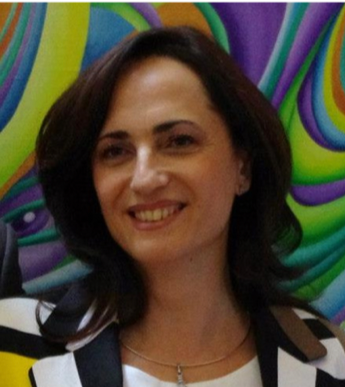
NIKOLINKA NIKOLOVA
Nikolinka Nikolova è un’artista di origine bulgara che dal 1992 vive e lavora in Italia e rappresenta oggi una realtà importante del mondo artistico italiano, come testimoniato dalla sua attività nei ultimi anni.
Iniziata la carriera nell’ambito della forma, dopo una serie di prove condotte con intensa applicazione ma rapidamente esaurite, l’artista ha definito le complesse caratteristiche dello stile attuale il Chromoemotism, che rappresenta il frutto di una prima quanto piena maturità. Si tratta della creazione di un mondo di straordinaria vivacità e di metodica applicazione che pone gli osservatori di fronte ad espressioni di altissimo impatto visivo dietro le quali si nasconde un mondo che si colloca oltre i chiusi orizzonti della visione tradizionale per attingere i liberi universi della fantasia in virtù di una tecnica che sfugge ad una precisa definizione.
In realtà la ricchezza di spunti, esaltati da uno stile straordinario ed assolutamente originale, fa della pittrice italo-bulgara, come si è detto, una delle personalità artistiche più interessanti dell’attuale panorama artistico nazionale. Dal 2003 partecipa a mostre collettive in Italia e all’Estero.
Ha progettato vetrate artistiche per enti pubblici e privati. Ha avuto diversi riconoscimenti, premi e pubblicazioni in giornali e riviste d’arte come artista e curatrice di eventi d’arte.
Ha creato una linea “Vesti d’arte” con le sue opere stampate su tessuti pregiati di raso e chiffon di seta da indossare, presentando i suoi foulard “con il nome”, come sottolinea l’autrice, perché portano i titoli delle opere riprodotte.
La sua arte versatile e colorata si presenta anche in oggetti d’arredamento come lampade e sedie.
Il suo STUDIO ESPOSITIVO si può visitare a Nichelino in via Spadolini,9 che è anche CENTRO CULTURALE e sede dell’Associazione “L’Arte Incontra…” presieduta da lei, dove si svolgono corsi creativi di pittura e musica.
Nikolinka Nikolova出生于保加利亚,自1992年以来一直在意大利工作。今天,她在意大利艺术界扮演着重要的角色,近年来她的活动证明了这一点。艺术家在形式领域有着丰富的职业生涯,他很快就确定了当前Chromoemotism模型的复杂特征,这使他作为一名艺术家完全成熟。她是一个充满活力和有条不紊的应用世界,通过一种无法准确定义的技术,将观众置于视野的视野和幻想的世界之中。丰富的创意,使其成为当前国家艺术界最有趣的艺术个性之一。她为公共和私人机构设计了彩色玻璃窗,并在出版物,报纸和艺术杂志上获得了多个奖项和奖项。她创作了一条“装扮艺术”系列,她的艺术品采用精美的绸缎和丝绸面料印制,如围巾和其他时尚单品所见。
她多才多艺的艺术品也出现在灯具和椅子等家具中。自2003年以来,她参加了意大利和国��的团体展览以及艺术和艺术活动策展人。她的展览工作室可以通过Spadolini,9位于Nichelino参观,这也是一个文化中心,也是由她主持的“Meet Art …”协会的所在地,那里举办创意绘画和音乐课程。
Nikolinka Nikolova was born in Bulgaria and has lived and worked in Italy since 1992. Today she plays an important part in the Italian art world, as evidenced by his activity in recent years.
Having started her career in the field of form, the artist soon defined the complex characteristics of the current style of Chromoemotism, which led to her full maturity as an artist.
Hers is a world of extraordinary vivacity and methodical application that places the audience beyond the horizons of traditional vision and into a universe of fantasy with a technique that defies precise definition.
It is a world filled with a wealth of ideas, it is enhanced by an extraordinary and absolutely original style, making her one of the most interesting artistic personalities of the current national art scene.
She has designed stained glass windows for public and private institutions and has won several awards and prizes and has been seen in publications, newspapers and art magazines.
She created a line “Vesti d’arte” with her art printed on fine satin and chiffon silk fabrics to wear, as seen on scarves and other fashionable items.
Her versatile and colorful art is also present in objects of furniture such as lamps and chairs.
Since 2003 she has participated in group exhibitions in Italy and abroad as well as an artist and curator of art events.
Her EXHIBITION STUDIO can be visited in Nichelino in via Spadolini, 9 which is also a CULTURAL CENTER and home of the “L’Arte Incontra …” association chaired by her, where creative painting and music courses are held.
Attilio Lauricella
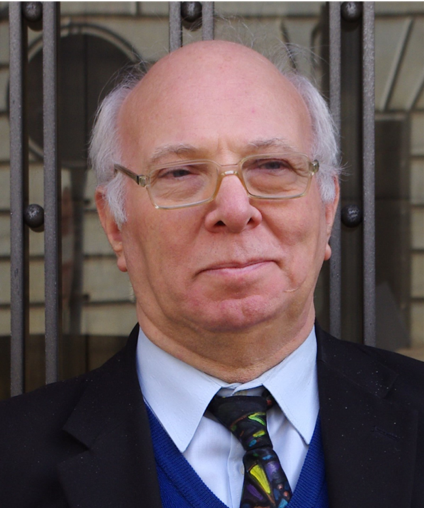
Attilio Lauricella
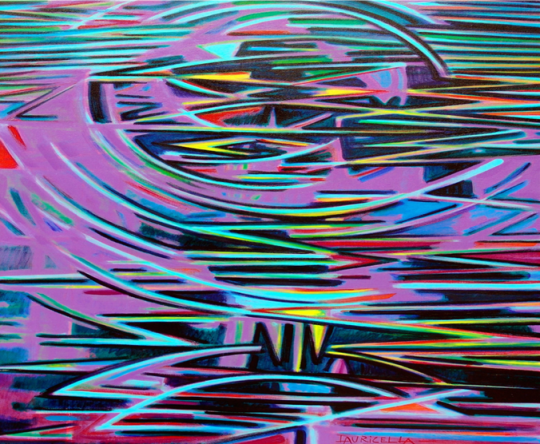

Attilio Lauricella e’ nato a Raddusa (CT) nel 1953 e risiede a Torino dal 1959. Si e’ formato attraverso lo studio classico della figurazione frequentando il Liceo Artistico dell’Accademia Albertina di Torino e gli studi di vari artisti. Lavora a tempo pieno come pittore.
Dal 1972 partecipa alle esposizioni della Promotrice delle Belle Arti di Torino. Attualmente e’ nel direttivo dell’Associazione “L’Arte Incontra..:”
Sono numerose le esposizioni personali a carattere anche didattico, per conto degli Assessorati alla cultura di vari Comuni dell’ hinterland torinese.
Ha esposto a Parigi, San Pietroburgo, Mosca e tantissime altre città nel mondo
Ha presentato le sue opere in prestigiosi studi di architettura in varie città italiane. Sue opere si trovano in collezioni pubbliche e private.
Attilio Lauricella于1953年出生于Raddusa(CT),自1959年以来一直住在都灵。他在参加都灵阿尔贝蒂娜艺术学院艺术学院期间,在人物研究方面接受过广泛的经典培训。自1972年以来,他参加了都灵美术展览,并成为“L’Arte Incontra …”协会的董事会成员。他曾在都灵各个城市举办过多次展览。他的作品也在巴黎,圣彼得堡,莫斯科和世界上许多其他城市展出,并在意大利的许多着名建筑公司以及公共和私人收藏中找到了一席之地。
他作为一名画家继续全职工作
Attilio Lauricella was born in Raddusa (CT) in 1953 and has lived in Turin since 1959. He had extensive classical training in the study of figures while attending the Art School of the Albertina Academy of Turin.
Since 1972 he has participated in the exhibitions of Fine Arts in Turin and is on the board of the Association “L’Arte Incontra ..:” He has had a number of exhibitions in various municipalities in the Turin beyond.
His work has also been shown in Paris, St. Petersburg, Moscow and many other cities in the world, as well as finding a place in many prestigious architectural firms throughout Italy and public and private collections.
He continues to work as a full time painter.
ANNA MARIA LAMBERTI

ANNA MARIA LAMBERTI

Vicepresidente dell’Associazione Culturale “ L’Arte Incontra…” di Nichelino. Da tanti anni si occupa di volontariato attraverso laboratori per disabili e persone affette di Parkinson. L’arte l’ha sempre attratta e affascinata nella ricerca della sua identità. Le sue opere rappresentano viaggi mistici del proprio inconscio, costellato da montagne viventi, navi volanti, o ghepardi sospesi. La sobrietà pop-naif dei suoi campi di lavanda o l’universalità d’una mela sospesa nella vastità della dimensione cromatica le consente di approfondire intuizioni immediate, dilatandole figurativamente a ricerche indotte che ampliano i rigori della logica. La surrealtà che suscita artisticamente la allontana dalla mera convenzionalità delle cose, provocando nei fruitori più sensibili una condivisa sensazione di leggerezza, di evanescenza, quasi di desiderio di allontanarsi dal peso della quotidianità. Da tanti anni espone in Italia e all’estero.
Anna Maria担任Nichelino的Nikolinka Nikolova文化协会“L’Arte Incontra ……”的副总裁。多年来,她一直参与志愿服务,为残疾人和帕金森病患者举办研讨会。艺术总是吸引并着迷于她寻找自己的身份。 她的作品代表了她自己无意识的神秘旅程,一个充满了活山,飞船或悬浮的猎豹的宇宙。 她的薰衣草田的视野或悬浮在广阔的色彩维度中的苹果的普遍性使她能够深化其意义,扩展它们并拓宽简单逻辑的范围。
超现实主义远离传统,允许最敏感的用户分享一个感觉和轻盈的世界,在地平线上消失,摆脱日常生活的压。
Anna Maria serves as Vice President of Nikolinka Nikolova’s Cultural Association “L’Arte Incontra …” of Nichelino.
For many years she has been involved in volunteering through workshops for disabled people and people with Parkinson’s disease.
Art has always attracted and fascinated her in the search for her identity. Her works represent mystical journeys of her own unconscious, a universe filled with living mountains, flying ships, or suspended cheetahs.
The vision of her lavender fields or the universality of an apple suspended in the vastness of the chromatic dimension allows her to deepen their very meaning, expanding them and broadening the confines of simple logic.
The surreality steers away from mere conventionality, allowing the most sensitive users to share a world of feeling and lightness, fading on the horizon, pulling away from the weight of everyday life.
ADRIANA CERNEI

ADRIANA CERNEI

Dopo lunghi anni di vita a Torino, dove ha iniziato tutto da zero e lontana dalla famiglia di origine, un giorno percepì la prontezza di aprire finalmente le ali. Riprende la pittura seguendo corsi, laboratori, lezioni con maestri locali e predilige il figurativo all’informale di una volta poiché sente ormai sue le parole di Rerich: “per salvare la rosa devi saper riconoscere la sua bellezza. Per amare le montagne devi sentire la loro magia”… in ogni dettaglio, forma, gesto. Espone in varie mostre in Italia e all’estero, alcune sue opere fanno parte delle collezioni private.
Adriana Cernei在意大利都灵度过了许多年。 在那个时代远离家庭,但她很快就决定再次专注于她的艺术。 她恢复了绘画,参加了课程和研讨会,并与当地大师一起参加了讲座。 她来遵循Rerich的指示,他说:“为了拯救玫瑰,你必须知道如何认识它的美丽。要爱山,你必须感受到它们的魔力”……在每一个细节,形式,姿态。 她的作品曾在意大利和国外的许多展览中展出,她的许多作品现在都是私人收藏的一部分。
Adriana Cernei has lived for many yeas in Turin, Italy. In that time has lived far from family but she soon decided it was time to once again concentrate on her art.
She resumed painting, took courses and workshops and attended lecture with local masters.
She came to follow the dictates of Rerich who said: “To save the rose you must know how to recognize its beauty. To love the mountains you have to feel their magic “… in every detail, form, gesture.
Her work has been featured in many exhibitions in Italy and abroad, and many of her works are now part of private collections.
IRINA MARKOVA

IRINA MARKOVA

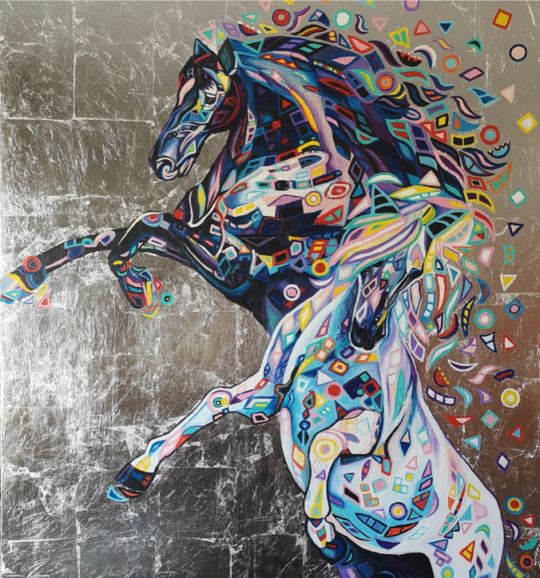
Irina Markova è una pittrice d’origine russa che vive e lavora a Como, in Italia; da sempre ha l’arte nel sangue, fin da piccola segue con continuità e costanza corsi specialistici di ritrattista, tecnica pittorica e disegno, diplomandosi poi presso l’Istituto di Design in Russia. L’artista ha partecipato a numerose manifestazione artistiche a carattere nazionale e internazionale, riscuotendo successo di critica e pubblico. La pittura di Irina è una sua visione della sintesi di un corpo coperto di ricami geometrici che è destinato a scomporsi a pezzi per arrivare a una certa semplicità geometrica come un triangolo, un cerchio, un rombo… Essi sono diversissimi tra loro e hanno un significato differente che segna il rapporto inscindibile tra massa, energia e luce.
伊琳娜·马尔科娃是一位出生于俄罗斯的画家,在意大利科莫生活和工作。 她的血液中总是有艺术。 早在俄罗斯设计学院毕业之前,她就作为肖像画家和绘画技术和绘画学习。 她参加了许多国家和国际艺术活动,享有重要和公共成功。 伊琳娜的画作结合了几何刺绣的身体的各种图像,似乎注定要分成几何图案,如三角形,圆形,菱形……每一个都是不同的,独特的,标志着质量之间不可分割的关系, 能量和光。
Irina Markova is a Russian-born painter who lives and works in Como, Italy. She has always had art in his blood.
Early on she studied as a portraitist and painting technique and drawing before graduating at the Institute of Design in Russia.
She has participated in numerous national and international artistic events, enjoying both critical and public success. Irina’s paintings combine the diverse images of a body covered with geometric embroidery that seem destined to break up into geometric designs such as like a triangle, a circle, a rhombus …
Each one is different and unique, marking the inseparable relationship between mass, energy and light.
XIANG YANG
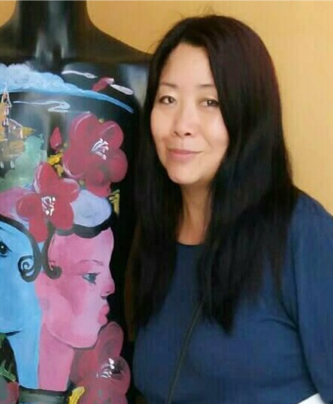
Xiang Yang


Nata a Qingdao nella provincia dello Shangdong, ha iniziato a dipingere a 14 anni attirando l’attenzione dell’ambiente artistico del suo paese.
Dopo aver frequentato la scuola d’arte nella sua citta, si trasferisce a Pechino dove si iscrive all’Accademia delle Belle Arti.
Durante il corso di studi si interessa sia alla pittura orientale che occidentale, conoscendo artisti europei come Modigliani, Picasso, Van Gogh e Dali.
Dopo aver consequito la laurea nel 1991, si dedica a realizzare dIpinti ad olio rappresentanti la vita quotidiana, sviluppando il suo stile e le sue scelte cromatiche.
Nel 1992 partecipa a quattro mostre nella citta di Pechino una dalle quali organizzata dall’Ambasciata Australiana.
Tra il 1993 e 1994 è invitata alla Red Door Gallery e alla Taiwan Hotel Gallery.
Il Beijing Shangbao ed il China Daily, il piu importante quotidiano d’informazione cinese in lingua inglese, dedicano all’artista articoli di elogio.
Negli anni successivi i suoi lavori sono stati protagonisti in mostre a Pechino e in tutta la Cina.
La prima mostra italiana si e tenuta a San Remo nel giugno del 1995, presso le sale del Casino, e con essa la prima recensione sul Mattino di Napoli. Dal 1996 ad oggi espone in diverse città in Italia. I modelli estetici da cui parte la sua produzione pittorica sono chiamante occidentali.
出生于山东省青岛市的杨翔于14岁开始绘画,吸引了她所在国家的艺术环境。在这个城市的艺术学校上学后,她搬到了北京,在那里他就读于美术学院。在学习期间,她对东西方绘画产生了兴趣,特别是莫迪利亚尼,毕加索,梵高和达利等欧洲艺术家。
1991年毕业后,她致力于制作代表日常生活的油画,开发出独特的风格和色彩。1992年,她参加了北京市的四个展览,其中一个由澳大利亚大使馆组织。 1993年至1994年,她被邀请到红门画廊和台湾酒店画廊。北京上宝和中国日报是中国最重要的英文新闻日报,发表了赞美艺术家的文章。近年来,她的作品在北京和中国各地的展览中展出。她的第一次意大利展览于1995年6月在San Remo的赌场大厅举行,并在Mattino di Napoli进行了第一次评论。从1996年到现在,她在意大利的各个城市展出。
Born in Qingdao in the province of Shangdong Xiang Yang began painting at the age of 14, attracting the attention of her country’s artistic environment. After attending art school in this city, she moved to Beijing where he enrolled at the Academy of Fine Arts. During her studies she became interested in both eastern and western painting, in particular European artists such as Modigliani, Picasso, Van Gogh and Dali.
After graduating in 1991, she dedicated herself to making oil paintings representing everyday life, developing a unique style and color.
In 1992 she participated in four exhibitions in the city of Beijing, one of which was organized by the Australian Embassy. Between 1993 and 1994 she was invited to the Red Door Gallery and to the Taiwan Hotel Gallery.
The Beijing Shangbao and the China Daily, the most important Chinese news daily in English, has published articles in praise of the artist. In recent years her works have been shown in exhibitions in Beijing and throughout China. Her first Italian exhibition was held in San Remo in June 1995, in the Casino halls, and with it the first review on the Mattino di Napoli. From 1996 to present she exhibited in various cities in Italy.
GIORGIO DI GIFICO
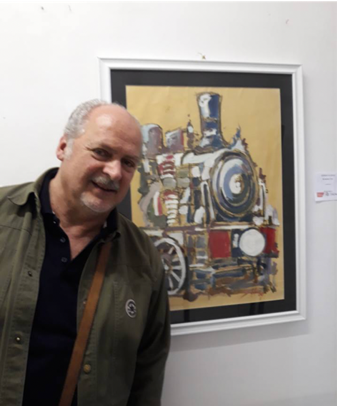
GIORGIO DI GIFICO


Giorgio Di Gifico è nato a Santos (Brasile), dove frequenta sotto la guida della prof. Djelza Derito l’accademia di pittura infantile. Arriva in Italia e conosce subito il meridione stabilendosi in Lucania a Montemilone (PZ). Nel 1970 si trasferisce a Torino e prosegue gli studi frequentando il Liceo Artistico “Cottini”, sotto la guida dei professori Gastini, Tabusso e Carena.
Nel 1976 la sua prima pubblicazione sul “Bolaffi Arte” (Catalogo d’Arte Nazionale).Nel 1978 terminato il Liceo Artistico si iscrive alla Facoltà di Architettura al Politecnico di Torino.
Giorgio Di Gifico出生于桑托斯(巴西),在教授的指导下出席。 Djelza Derito在儿童绘画学院。 他一到意大利就知道他想在Montemilone(PZ)的Lucania定居。 1970年,他在都灵教授Gastini,Tabusso和Carena的指导下,前往都灵并继续学习参加Liceo Artistico“Cottini”。 1976年,他的第一本出版物登上了“Bolaffi Arte”(国家艺术目录)。 1978年,他完成了艺术高中,并就读于都灵理工学院建筑学院。
Giorgio Di Gifico was born in Santos (Brazil), where he attended under the guidance of prof. Djelza Derito in the academy of children’s painting. As soon as he arrived in Italy he knew he wanted to settle in Lucania in Montemilone (PZ). In 1970 he moved to Turin and continued his studies attending the Liceo Artistico “Cottini”, under the guidance of professors Gastini, Tabusso and Carena. In 1976 his first publication arrived on the “Bolaffi Arte” (National Catalog of Art). In 1978 he finished his artistic high school and enrolled at the Faculty of Architecture at the Polytechnic of Turin.
PATRIZIA TUMMOLO
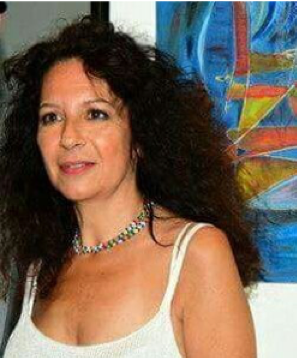
PATRIZIA TUMMOLO
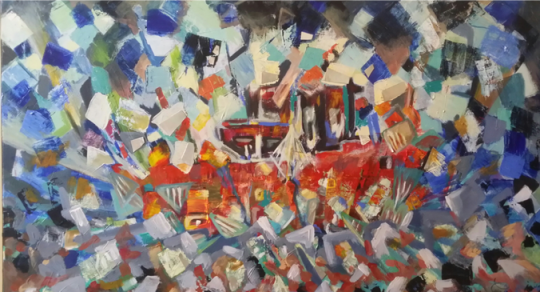

Patrizia Tummolo nasce nel 1961 a Genova, dove vive e lavora .Negli anni 90, è responsabile della scenografia teatrale per gli spettacoli del centro turistico “Squillace”, nella cittadina di Squillace (Catanzaro). Espone da molteplici anni. Vanno ricordate le colettive di Mapello(1995). Notevoli i suoi lavori artistici per l’edizione storica “ Come conoscere Genova…Tramite la Metropolitana”, casa editrice Janua Press nel 2008. Nel 2010 al premio internazionale di pittura , scultura e grafica, “ Città di New York” le conferiscono una critica di
riconoscimento. Nel 2011 conosce e frequenta lo studio del maestro scultore Balàzs Berzeny da cui apprende la lavorazione di vari tipi di pietra, marmo e metallo che attualmente l’artista lavora nella cava laboratorio- associazione liguria Arte.
Patrizia Tummolo于1961年出生在热那亚,在那里她仍然生活和工作。 在90年代,她负责Squillace(Catanzaro)镇“Squillace”旅游中心的戏剧布景设计。 多年来,她有很多展品,其中包括Mapello(1995)。 她还负责Janua Press于2008年出版的历史版“如何了解热那亚……通过地铁”。2010年,她被授予“纽约市”奖,这是一幅绘画,雕塑和国际奖项。图形。 2011年,她与雕塑大师BalàzsBerzeny一起训练,在那里她使用各种类型的石头,大理石和金属,这些都是她在利古里亚艺术实验室协会采石场工作的一部分。
Patrizia Tummolo was born in 1961 in Genoa,Italy, where she still lives and works.
In the 90s, she was responsible for the theatrical set design for programs at the “Squillace” tourist center in the town of Squillace (Catanzaro).
She has had many exhibits over the years, including Mapello in 1995. She was also responsible for the historical edition “How to get to know Genoa … Through the Metro” published by Janua Press in 2008.
In 2010 she was awarded the “City of New York,” an international prize for painting, sculpture and graphics. In 2011 she trained with the master sculptor Balàzs Berzeny where she worked with various types of stone, marble and metal that have become part of her work in the Ligurian art laboratory-association quarry.
LAURA MINUTI

LAURA MINUTI

Laura Minuti vive e lavora a Genova, grande creativa,ha modellato creta e dipinto tessuti per bambini. Nel 2002 scopre la cartapesta. Appassionandosi a questa tecnica di scultura inizia il suo percorso artistico realizzando prevalentemente personaggi, tra cui le “Popolane”, figure di donne in controtendenza rispetto all’immagine stereotipata femminile Espressività, sentimento di sincerità, serenità, gioia di vivere: questo trasmettono i personaggi realizzati, distinguendosi per la particolarità della morbidezza delle forme e per gli occhi socchiusi. Apprezzata dal pubblico dalla critica.
Le sue opere sono state pubblicate su cataloghi e riviste d’arte. (Alfredo Pasolino)
Laura Minuti在意大利热那亚生活和工作。 她拥有出色的创作力,并为儿童设计了模型粘土和彩绘面料。 2002年,他发现了papier-mâché,并对这种雕塑技术充满热情。 她的艺术生涯也见证了她创造的角色,包括“Popolane”,以及与女性陈规定型形象形成鲜明对比的女性形象。 这些作品的特点是形状柔和,半闭眼。 她的作品得到了公众评论家的赞赏,并在许多艺术目录和杂
Laura Minuti lives and works in Genoa, Italy. She has a great creative force, and has worked on modelled clay and painted fabrics for children. In 2002 he discovered papier-mâché and became very passionate about this technique of sculpture. Her artistic career has also seen her creating characters, including the “Popolane”, and figures of women in contrast with the stereotypical image of women. These works are distinguished by the softness of the shapes and the half-closed eyes. Her work has been appreciated by critics from the public and has been published in many art catalogs and magazines. (Alfredo Pasolino)
MARISA IERARDI
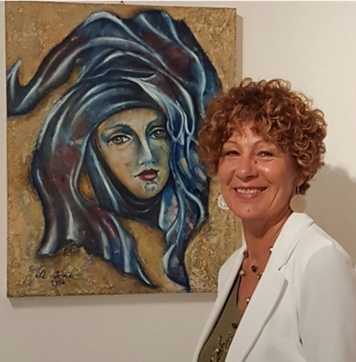
MARISA IERARDI

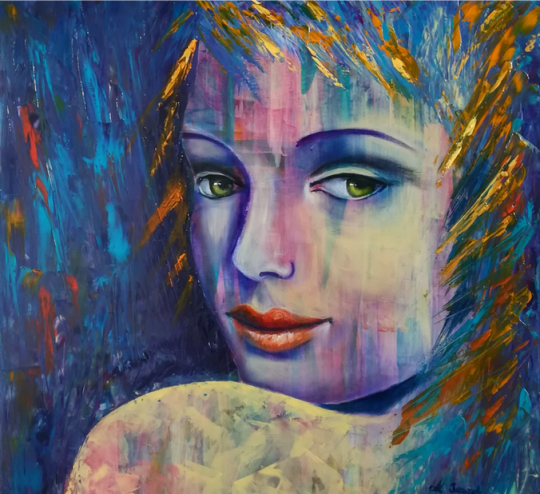
“I colori dell’anima”
Parlare di Marisa Ierardi ci fa incrociare la strada con un’artista appassionata, attenta al particolare, dalle pennellate sicure e con l’attenzione costante al soggetto poiché le sue opere confermano dettagli, seguono linee e si trasformano man mano che si perfezionano. La versatilità di quest’artista fa sì che la sua arte cambi continuamente passando dal pennello alla spatola e da questa sino alle grafite, alla matita, con risultati eccellenti. I suoi ritratti in bianco e nero acquistano nuova linfa nell’essere tratteggiati e completati con mano sicura e attenta ad ogni minimo dettaglio. (dott.sa Giusy Patti)
“灵魂的颜色”
玛丽莎·伊拉尔迪(Marisa Ierardi)是一位充满热情的艺术家,他注重细节,采用自信的笔触,遵循艺术不断变化的原创线条。 它从刷子到石墨,再到铅笔,效果极佳。 她的黑白肖像画展示了每一个细节。 (dott.sa Giusy Patti)
“The colors of the soul”
Marisa Ierardi is a passionate artist who pays attentive to detail, employing confident brushstrokes that follow original lines whose art changes continuously. It passes from brush to graphite, to pencil, with excellent results. Her black and white portraits take show a sure hand and attention to every detail. (dott.sa Giusy Patti)
XENIA MIRANDA

XENIA MIRANDA


Nata in Colombia, ha frequentato la Accademia di Belle Arti di Barranquilla e dopo il taller sperimentale di David Manzur a Bogotá. Successivamente ha fatto parte del gruppo artistico “La Huella”, sempre a Bogotá.
Viaggia in Europa, studiando a Roma alla Scuola del Nudo e si diploma all’Istituto Italiano per l’Arte ed il Restauro.
Da diversi anni si dedica completamente alla ricerca pittorica, sperimentando tecniche diverse. Il colore predominante. Un figurativo appena accennato in diverse opere. Per ultimo attualmente ha una dialettica astratta minimalista in monocromo.
Xenia Miranda出生于哥伦比亚,参加了巴兰基亚美术学院和David Manzur在波哥大的实验项目。 她还参加了波哥大的艺术团体“La Huella”。
她曾在欧洲各地旅行,在罗马的Scuola del Nudo学习,毕业于意大利艺术与修复学院。
几年来,她一直致力于图像研究,尝试不同的技术,在她的许多作品中都有所体现。
Born in Colombia, Xenia Miranda attended the Barranquilla Academy of Fine Arts and David Manzur’s experimental program in Bogotá. She also took part in the artistic group “La Huella”in Bogotá.
She has travelled extensively in Europe, studying in Rome at the Scuola del Nudo and graduated from the Italian Institute for Art and Restoration.
For several years she has devoted himself completely to pictorial research, experimenting with different techniques, featured in many of her works.
MARILISA SERRA

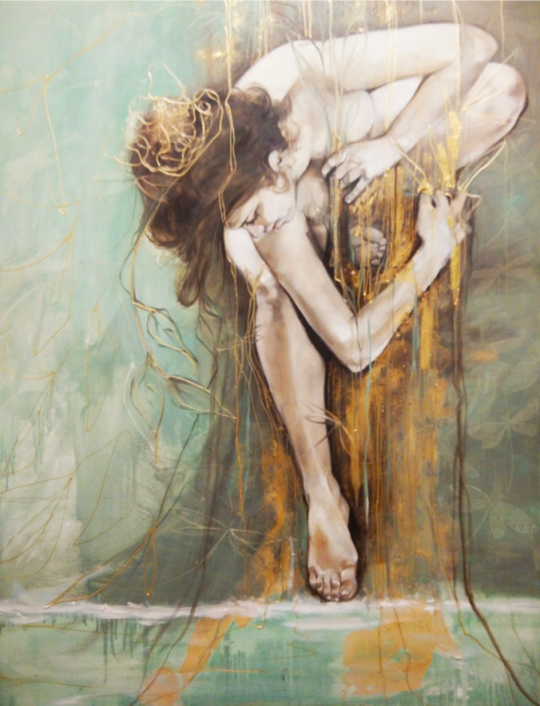
Marilisa nasce ad Oristano il 23 Ottobre 1968 .
Nel 1993 si diploma presso l’Accademia Albertina di Belle Arti di Torino. Fonda uno dei primi laboratori per lo studio e l’applicazione delle più svariate forme d’arte in collaborazione con Cristina Giargia, amica da sempre, artista e compagna di vita. Il connubio delle loro espressioni è stato il focolaio di uno straordinario periodo di intensità artistica che va oltre i confini dell’arte intesa come semplice genio, e travalica tutt’oggi ogni frontiera di normale concezione “quotidiana”, per esplorare i più profondi e reconditi aspetti dell’essenza umana.
Marilisa于1993年毕业于都灵的阿尔贝蒂娜美术学院。她很快就开始与Cristina Giargia合作学习和应用各种艺术形式,Cristina Giargia是一位长期的朋友,艺术家和生活伴侣。 他们表达的结合一直是超越艺术界限的非凡艺术强度时期的焦点。 这项工作继续超越正常“日常”概念的前沿,探索人类本质的最深刻和最隐蔽的方面。
Marilisa was born in Oristano on October 23, 1968 and graduated from the Albertina Academy of Fine Arts in Turin in 1993. She soon began to study and apply various art forms in collaboration with Cristina Giargia, a long-time friend, artist and life companion. The combination of their expressions has been the focus of an extraordinary period of artistic intensity that goes beyond the boundaries of art. The work continues to move beyond the very frontiers of normal “everyday” conception, exploring the deepest and most hidden aspects of human essence.
VITTORIA SALATI
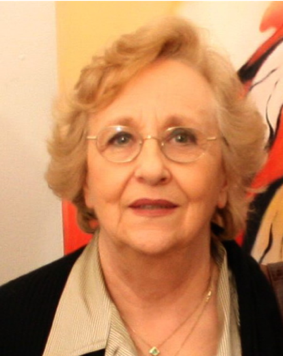
Vittoria Salati

Vittoria Salati, nata sull’Appennino Parmense risiede e lavora a Cambiago (MI). E’ entrata nell’ambiente artistico da cui è rimasta coinvolta e catturata, grazie al marito Giovanni Mondadori estimatore di arte; in questo magico mondo ha incontrato importanti artisti contemporanei, che l’hanno stimolata a iniziare quindi una sua attività artistica basata su una tecnica inusuale .
Le opere di Vittoria Salati autodidatta infatti, si caratterizzano per essere incise a mano in ogni più piccolo particolare su tavola di legno, successivamente dipinte con colori acrilici, rappresentando molteplici soggetti, dalle figure nitide e ben definite e dai colori forti e decisi. Originale anche la cornice che è parte integrante della stessa tavola. Vittoria Salati出生于Parma Apennines,现居住在Cambiago(MI)。 她的丈夫乔瓦尼蒙达多利(Giovanni Mondadori)是一位伟大的艺术崇拜者,她被鼓励成为一名艺术家。 随后,她继续与许多重要的当代艺术家见面,其中许多艺术家以一种不寻常的技巧为基础,激励她开始她的艺术活动。 她的作品主要是自学成才,其特点是在木桌上用细致的手工雕刻,然后涂上丙烯颜料。 这部作品代表了多个主题,具有清晰明确的数字和强烈而果断的色彩。 框架是同一桌子的组成部分,也是原创的。
Vittoria Salati was born in the Parma Apennines and now lives and works in Cambiago (MI). She was encouraged to become an artist by her husband, Giovanni Mondadori, a great admirer of all art. In time she went on to meet many important contemporary artists, many of whom stimulated her to start her artistic activity based on an unusual technique. Her work, largely self-taught, is characterized by detailed, hand-made engravings on wooden tables, and then painted with acrylic colors. The work represents multiple subjects, with clear and well-defined figures and strong and decisive colors. The frames, which are an integral part of the same table, are also original.
MARIE CHRISTINE STENGER

MARIE CHRISTINE STENGER
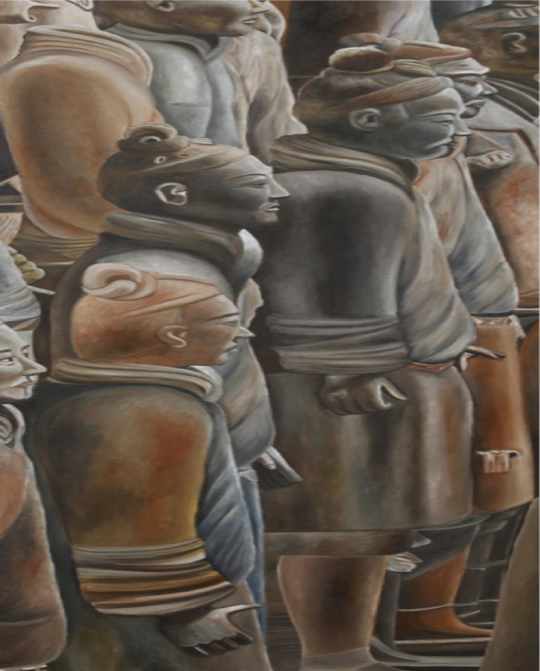

Di origine francese da più di trenta anni vive e lavora in Italia.
Ha sempre amato il disegno e dipinge con immenso piacere da circa 20 anni, ha frequentato per molti anni la scuola di pittura Giacomo Grosso”.
Prediligge la pittura classica. Inizialmente, i suoi quadri sono ispirati da i suoi innumerevoli viaggi in giro per il mondo, raffigurando I volti delle persone e la loro cultura. Attraversso le sue opere lo spettatore diventa “turista” viaggiando insieme a lei.
Marie最初来自法国,在意大利生活了三十多年。
20年来,她一直在绘画和绘画,非常愉快。 她参加了Giacomo Grosso绘画学校多年。她更喜欢古典绘画,最初她的绘画灵感来自世界各地的无数次旅行,捕捉了人们的面孔和他们的文化。 观众成为与她一起旅行的“游客”,并参观了世界上许多地方。超现实主义远离传统,允许最敏感的用户分享一个感觉和轻盈的世界,在地平线上消失,摆脱日常生活的重压。
Originally of French origin, Marie has lived for over thirty years in Italy.
She has always loved drawing and has been painting with great pleasure for about 20 years. She attended the Giacomo Grosso painting school for many years.
She prefers classical painting and initially her paintings were inspired by countless trips around the world, capturing the faces of people and their culture. Through her works, the viewer becomes a “tourist” traveling with her and taking in the many sites the world has to offer.
Fausto Nazer

Fausto Nazer

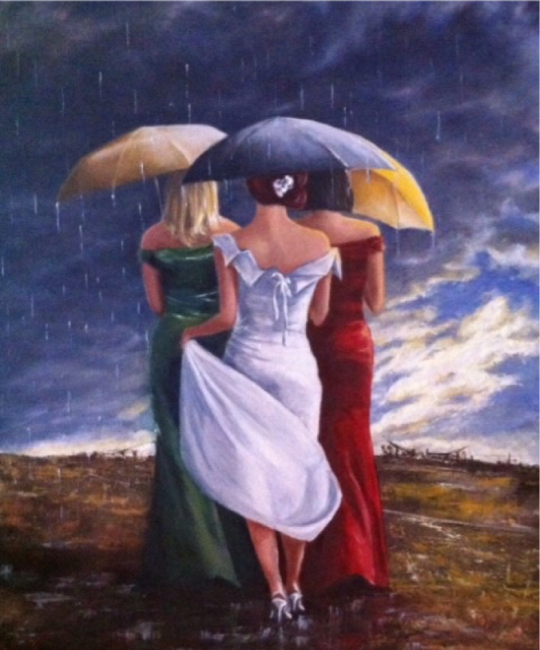
Fausto Nazer nasce a Venasca (CN) nel 1966, dove tuttora risiede, e fin da piccolo sente già una forte inclinazione per il disegno e le arti figurative. A questo mondo si avvicina da autodidatta, attraverso ricerche ed indagini pittoriche ed arriva nel 1993 alla sua prima esposizione. Ha esposto a Londra,Roma, Bueon Aires, Montecarlo..La pittura di Nazer emoziona grazie alla sua presa diretta con l’osservatore e si materializza in tutta la sua concretezza rivelando la sensibilità pittorica che c’è dietro, nonché gli anni di studio e di approfondimento che sono stati essenziali. Dal paesaggio a figure femminili solitarie colte in un attimo di intimo raccoglimento. Da gruppi di impiegati all’uscita dal lavoro a coppie di amanti che, incuranti della pioggia, si baciano romanticamente. Dietro campeggia la metropoli, rassicurante e grigia presenza che non si impone ma che accompagna scorci di vita rubati da un occhio esperto e abituato a saper non solo guardare ma anche riprodurre, senza mai tradire la serena sensibilità che gli appartiene.
Fausto Nazer于1966年出生于韦纳斯卡(CN),他仍然在那里生活。
即使作为一个年轻人,他也对绘画和视觉艺术产生强烈的冲动。 他花了很多时间研究他创造的视觉世界。 这导致他在1993年的第一次展览。从那时起,他在伦敦,罗马,Bueon Aires,Montecarlo展出了他的作品。
Nazer的绘画激发了想象力,吸引观众进入一个高度敏感和吸引人的世界。
他的风景,孤独的女性形象陷入了一个亲密回忆的时刻,在雨中亲吻的恋人。
这是一种令人安心和灰色的存在,并没有强加给自己,而是伴随着专家眼睛偷偷摸摸的生活瞥见,这种眼睛不仅要看,而且要重现,而不会背叛其核心的宁静敏感。
Fausto Nazer was born in Venasca (CN) in 1966, where he still lives.
Even as a young man he felt a strong urge to drawing and visual arts. He has spent a good deal of time studying the visual world he has created. This lead to his first exhibition in 1993. Since then, he has exhibited his work in London, Rome, Bueon Aires, Montecarlo.
Nazer’s painting excites the imagination and draws the viewer into a highly sensitive and appealing world.
His landscapes, solitary female figures caught in a moment of intimate recollection, the lovers who kiss in the rain.
It is a reassuring and gray presence that does not impose itself but accompanies glimpses of life stolen by an expert eye that knows not only to look but also to reproduce, without ever betraying the serene sensitivity that is at its core.
IVO VASSALLO
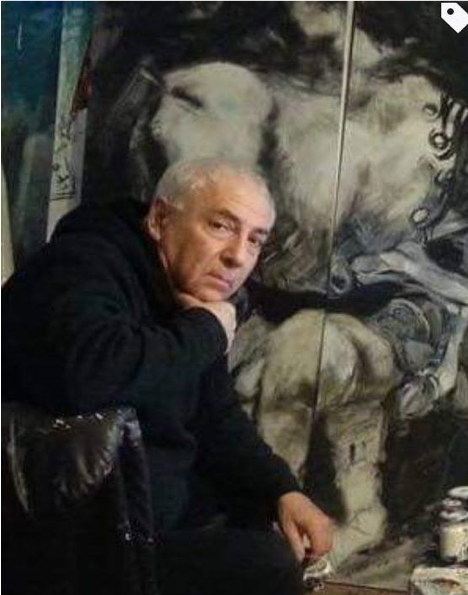
IVO VASSALLO


Ivo Vassallo, ha insegnato tecniche pittoriche all’Accademia di Belle Arti di Genova dove è nato e vive. La sua ricerca iniziale del colore è informale con un solido sistema figurativo, nel tempo si evolve in un cromatismo più raffinato e una propensione più intensa per il paesaggio e la figura.
L’artista ligure usa colori tenui e chiari con macchie insolite che illuminano l’aspetto carnale dei personaggi dipinti e usa la sua conoscenza storica per dargli la vita o la morte che meritano.
Dipinge cavalli che sembrano nuvole tra le nuvole e raccontano storie per chiarire la loro umanità. Un pittore che un tempo affrescò le pareti dello studio di Fabrizio De Andrè, dal quale apprese i toni musicali che poi trasfuse nelle sue opere. Nella sua lunga carriera artistica ha esposto in numerose mostre collettive e personali.
Le sue opere fanno parte di collezioni pubbliche e private.
Ivo Vassallo在意大利热那亚的美术学院教授绘画技巧,在那里他出生并仍然生活。
他最初的非正式研究随着时间的推移逐渐演变成一种精致的配色方案,以及对风景和人物形象的浓厚兴趣。艺术家以不寻常的方式使用浅色和浅色,照亮人的方面。
他描绘的看起来像云的马,讲故事以澄清我们的人性。
曾经在FabrizioDeAndré工作室的新墙上工作的画家,他从中学到了许多输入他作品的东西。 在他漫长的艺术生涯中,他的作品曾在众多公共和个人展览中展出。
Ivo Vassallo teaches painting technique at the Academy of Fine Arts in Genoa Italy, where he was born and still lives.
His initial study of color was informal but over time it evolved into a more refined color scheme and an intense interest in landscapes and the human figure.
The artist uses light and pale colors in unusual ways that illuminate the human aspect characters and taps into his historical knowledge to give his work the life they deserve.
He paints horses that look like clouds and tell stories to clarify our sense of humanity.
A painter who once worked on frescoes on the walls of Fabrizio De Andrè‘s studio, from whom he has learned many things that have transfused his work. In his long artistic career his work has been exhibited in numerous public and personal exhibitions.
LUCIANO VALENSIN



Luciano Valensin, pittore e poeta, nato a Siena il 30/11/1938, diplomato all’Istituto d’Arte di Siena nell’anno 1960, ha frequentato per due anni l’Accademia di Belle Arti di Firenze, poi interrotta in seguito al conseguimento dell’Abilitazione all’insegnamento, ottenuta a Cagliari nel 1962 e al conseguente incarico del Provveditorato agli Studi di Siena.
Ha insegnato Disegno ed Educazione Artistica dal 1962 al 1970 presso le Scuole Medie di Chiusi, Bettolle e Trequanda, interrompendo la continuità di docenza per ragioni di salute e trasferendosi per cure in Inghilterra, dove ha insegnato.
Luciano Valensin,画家和诗人,于1938年11月30日出生于锡耶纳。他于1960年毕业于锡耶纳艺术学院,两年后他就读于佛罗伦萨的美术学院。 到最后,他取得了1962年在卡利亚里获得的教学资格,并随后被任命为锡耶纳省教育办公室。
他于1962年至1970年在丘西,贝托勒和特雷库达中学教授绘画和艺术教育,因健康原因中断教学的连续性,并在英格兰继续教学。
Luciano Valensin, a painter and poet, was born in Siena on 11/30/1938 He graduated from the Institute of Art in Siena in 1960 and for two years he attended the Academy of Fine Arts in Florence. By the end, he had achieved Qualification to teach, obtained in Cagliari in 1962 and to the consequent assignment of the Provincial Education Office of Siena.
He taught Drawing and Art Education from 1962 to 1970 at the Middle Schools of Chiusi, Bettolle and Trequanda, interrupting the continuity of teaching for health reasons and moving to care in England, where he continued to teach.
Arte italiana moderna – 意大利现代艺术 L'Associazione L'ARTE INCONTRA presenterà l'Esposizione Internazionale Arte italiana moderna Dal 16 al 23 giugno 2019 presso il Liaoning Normal University Art Museum di Dalian (Cina).
0 notes
Text
Wishing wall

Hartslane is a former derelict space turned community gallery, where artists and local people unite to share ideas, work on projects and be inspired
WORDS BY ALICE TROY-DONOVAN
At a quiet intersection of streets in the Hatcham area of New Cross Gate, 100 Delft blue tiles are mounted on to a plain brick wall. Together, they form one large, striking square, held together by simple blue and white designs, made for and by residents of the local neighbourhood.
“It’s a collective record of desire,” says Tisna Westerhof, one of the organisers behind the project, titled the 100 Wishes of Hatcham. “Each tile tells a different story of hope or aspiration for the local area.”
The wall is positioned where Hart’s Lane meets Hatcham Park Road, behind a large TK Maxx and no more than 20 metres from Hartslane, the gallery that Tisna helps run with Cristiana Bottigella and Sigrun Sverrisdottir.
The project collates tiles that are painstakingly hand-painted, fired and carefully assembled by a team of local residents and artists. The depictions in each six by six-inch tile are as eclectic as the people who made them: messages of reassurance, inherited words of wisdom, urban cityscapes in miniature, single flowers and trees conjoined by hearts.
“Each tile has this individual power and energy,” says Tisna – an artist herself and, like Cristiana and Sigrun, also a resident of New Cross Gate – “but it becomes so much more than the sum of its parts.”
The popping blue colour of the wall catches the eye from afar, offering a reason for people to stop, look and chat with other passersby.
“Rain or whatever, you see people stopping here,” says Tisna, who adds that the tile wall – which was officially unveiled on 12 October – “has already had an effect on people, who take it with them during the day”.
The gallery itself, which opened in a council-owned and formerly derelict building in 2012, was intended to have a similar effect on the local neighbourhood.
“New Cross Gate seemed to be between everything,” says Cristiana, who had moved to the area from Italy three years previously and was using her own house for small exhibitions and art-related events at the time.
“With Goldsmiths being very strongly present on the south side of New Cross Road, there was barely anything on the other side. We wanted to bridge the gap and to have something that was a meeting point through the arts.”
They also wanted to help reverse the trend of local spaces either being neglected or “regenerated”, often to make way for private housing. The Hartslane building was earmarked for a housing development before the political group People Before Profit intervened, as part of their campaign to use council-owned derelict properties to house families. However, it was deemed unsuitable for living in.
“The building was never used for housing people – it was originally a stables for changing horses on the route from London to Dover,” says Cristiana. “New Cross used to be where the turnpike gate into London was – hence the ‘Gate’.” More recently, it served a different mode of transport as a motorcycle repair shop, before falling into disuse.
What won Lewisham Council over to the trio’s vision was their ethos that t he galle y “was not oing to b a space just for us”. When H rtslane was no Instagram e women publicised the new ommu ity arts spa e a d arti ts’ stu i s by istributi g ostca ds usi g shop in oolwich to p int 2,500 fo 50.
Tis a s ys this very old s hool app oach pa d off t ey qu ickly became “a point of interest” for the local neighbourhood. “As a building it’s in the perfect position,” she says. “At the beginning, we were organising a lot of events with lots of people gathering at the front. Since then we’ve hosted hundreds of exhibitions and art events.”
They were also receiving daily requests from art students to take up residencies at the studios. As artists, Cristiana, Tisna and Sigrun had first-hand experience of the hierarchical nature of the gallery system.
“You either have to be invited somewhere or you have to pay,” says Tisna. Together, they felt a need for “sharing and exchange, and experimenting in an environment that is not pressurised by money”.
“We [now] have students coming from all the colleges in London and some from outside of London – Slade, Chelsea, Wimbledon, Kingston, Central St Martins, Goldsmiths, Camberwell – but we also have established artists looking for a space to experiment or engage with the community [surrounding the gallery],” says Cristiana.
The residencies last for six months and are shaped by a “socially engaged theme” set by the three women. Artists and curators are invited to respond to the brief and submit a proposal for an exhibition or art project, generally lasting between three days and two weeks.
“The first one was actually born just after [the vote for] Brexit came about,” says Tisna, adding that all three of them are non-British (she is Dutch, Cristiana Italian, and Sigrun Icelandic).
It was called United We Stand and encouraged collaborative work – not only between artists, but “where the arts mixed in with the normal world”.
Other themes – Phenomenal Woman, That’s Me; Unseen & Unspoken; Artists and Mental Health – sought to constructively address “an old structure that we felt wasn’t quite right” while envisioning an alternative. “Hartslane is really a place to dream as well.”
This sentiment epitomises the 100 Wishes of Hatcham project, which involved five workshops in spaces where local people were congregating anyway: All Saints Church and Community Centre; The Five Bells pub; a scout group and local playground; and an over-60s fun club.
“Not only were the 100 people working under the same brief, and united by the blue and white technique, but for us it’s also a connector to different countries, different cultures,” says Tisna.
“The technique came from China, spreading through Europe to England. I find that a beautiful metaphor.”
Other Hartslane projects centre on making things that are then gifted to the communities they come from. When we speak, they are finishing Stitching Time, a project connecting 60 to 70 primary school children in Lewisham with older people in three care homes, particularly those with dementia.
“We took the children to visit the care homes and interview older people about their lives, what they like, what they used to do,” explains Tisna. “Then, back in school, we led sewing and embroidery workshops with the children, to make memory cushions that were given back to the older people.”
With the 100 Wishes project supported by the mayor of London’s Culture Seeds programme, they hope to secure funding to bring it to different locations.
“We believe it’s applicable to anywhere and anyone, really,” says Cristiana. “The idea is to encourage imagination and rethinking of spaces. We are so used to [the pattern of] ‘old, redeveloped, new’. Regeneration is always like that in London. We just wanted to stop for a moment, invite people to think again and be imaginative.”
0 notes
Link
MACERATA – L’Associazione Amici di Palazzo Buonaccorsi e delle Istituzioni Culturali del Territorio presenta il progetto “IN DOMUM” dell’artista Adinda Putri-Palma (Matelica 1986) selezionato dal bando nazionale “Per Chi Crea”, promosso dal MIBACT e gestito da SIAE, che destinano il 10% dei compensi a supporto della creatività e della promozione culturale dei giovani. Il 17 luglio scorso il Consiglio di Gestione SIAE ha deliberato i vincitori dei 449 progetti beneficiari suddivisi in quattro bandi tra cui quello per le Nuove opere. IN DOMUM rientra tra i sette vincitori nella sezione Arti Visive.
“L’associazione “Amici di Palazzo Buonaccorsi e delle istituzioni culturali del territorio” – interviene Paola Ballesi presidente dell’associazione – in linea con la sua mission, oltre ad affiancare e coadiuvare le iniziative di Istituti culturali, Enti locali e Fondazioni per contribuire alla più ampia diffusione e all’uso pubblico dell’eredità culturale del territorio e alla sua valorizzazione, promuove tutta una serie di iniziative per favorire, monitorare e sondare la gestazione e l’affermazione di forme e visioni di contemporaneità.
Tra le più significative vorrei segnalare il Premio Pannaggi/ Nuova Generazione, il ciclo di Incontri sull’arte e dintorni e la recente partecipazione alla candidatura al Premio MIBACT-SIAE “Per chi crea”. Essere stati selezionati tra i sette vincitori, su scala nazionale, aggiudicandoci una somma considerevole e un prestigioso riconoscimento per una giovane artista del nostro territorio, non solo gratifica il nostro impegno ma ci sollecita a continuare sulla strada intrapresa.
Stimolare e valorizzare il tessuto creativo e le attività legate alla diffusione e allo sviluppo dell’Arte Contemporanea nelle particolari espressioni che la nostra Regione di volta in volta declina nel campo delle arti visive e applicate vuol dire infatti liberare energia creativa a sostegno della nostra cifra identitaria e del Made in Marche.”
Il progetto ha il patrocinio del Comune di Macerata, Comune di Recanati, Comune di Matelica, città appartenenti alla rete del MaMa – Marca Maceratese, creata dopo il sisma del 2016 per valorizzare e promuovere il territorio e il patrimonio artistico.
“La rete di MaMa – afferma l’assessore alla Cultura del Comune di Macerata Stefania Monteverde – nasce per valorizzare il nostro patrimonio culturale e paesaggistico con uno spirito di comunità tra Comuni e di collaborazione con le associazioni del territorio. Siamo contenti che la rete Marca Maceratese diventi sempre più distretto culturale e creativo, capace di intercettare nuove risorse per far crescere nuovi progetti culturali e nuove relazioni.”
“La città di Recanati ha un ruolo centrale poiché l’Annunciazione di Lorenzo Lotto, parte della Collezione del Museo Villa Colloredo Mels, è una delle opere che ha ispirato lo studio per la parte pittorica dell’istallazione, mantenendo un referente con le esperienze del Bauhaus (casa del costruire) e delle avanguardie storiche. Come spiega l’artista nel progetto.
“Nel 2016 sono accaduti due fatti straordinari che hanno instillato in me la necessità di parlare dell’abitare e del vivere/fare casa con un progetto artistico; un viaggio in bicicletta di 7000 Km attraverso l’Europa per tornare a casa nelle Marche e il terremoto che ha colpito il centro Italia nel 2016. Con questo lavoro vorrei mettere in moto una riflessione sulla cultura dell’abitare ed il concetto di casa rapportata al contesto post-sisma delle Marche offrendo spunti per un percorso costruttivo alternativo.”
Il dipinto del Lotto, oltre a rispondere alla tradizione pittorica del territorio, rappresenta meglio di chiunque altro il “terremoto emotivo” che investe la Madonna – e di riflesso il gatto – nel momento in cui appare l’angelo mentre Dio attraversa l’arco della stanza con un tuffo, scuotendo il tranquillo ambiente domestico.
“Sono molto felice che Recanati sia stata scelta come luogo d’esposizione per questo importante progetto d’arte contemporanea – afferma Rita Soccio assessora alle Culture, Turismo, Pubblica Istruzione di Recanati -. Il legame che l’artista ha ricercato nel suo progetto con la tela dell’Annunciazione del Lotto è al tempo stesso intimo, nella ricerca artistica personale e universale, nella sensibilizzazione verso i temi ecologici e della bioedilizia.
Questa esposizione è anche l’occasione per analizzare la pittura tonale veneta e riflettere sulla figura e le opere di Lorenzo Lotto che ha lasciato nelle Marche. Ringrazio l’Associazione Amici di Palazzo Buonaccorsi che si spende per progetti di valorizzazione di giovani e dell’arte contemporanea, la rete del MaMa che dimostra come l’arte sia un collante fondamentale di tutte le nostre Comunità.”
L’artista nel 2014 inizia a lavorare come Pittore assistente presso SCIENCE (UK) Ltd lo studio di produzione dell’artista britannico Damien Hirst. Dal 2017 Adinda ha instaurato la sua base operativa sull’Appenino umbro-marchigiano dove vive e lavora.
La realizzazione dell’opera è connessa al progetto di autocostruzione familiare in bioedilizia della sua attuale casa, in collaborazione con l’associazione A.R.I.A, nel borgo di Braccano a Matelica (MC) avviato da poco e destinato a ospitare uno studio artistico indipendente.
IN DOMUM consiste in un’installazione ambientale, un volume ad arco autoportante (H.3,60 x L. 3m P.1m) che sovrasta un’apertura percorribile, costruita con i materiali edili della Bioarchitettura, legno e paglia, argilla, calce e pigmenti. Al momento l’artista, sta visitando i musei marchigiani in cui sono conservati i dipinti del grande artista veneto, per svolgere una ricerca cromatica “lottesca”, con cui creare un campionario utile alla propria composizione pittorica.
L’opera sarà esposta negli spazi espositivi del Palazzo Comunale di Recanati dal 28 marzo al 19 aprile 2020. In seguito sarà ospitata dal Comune di Matelica.
“Ci tenevo molto ad essere presente in quanto stimo molto la famiglia Palma, conosco in particolare il babbo e la mamma di Adinda. E’ una famiglia speciale di Matelica e per Matelica – interviene il sindaco di Matelica Massimo Baldini -. La figlia non poteva essere da meno. Lo dimostra anche il fatto che ha vinto il bando nazionale “Per chi crea” con il progetto in Domum. Adinda svolge la sua attività creativa a Braccano, una deliziosa frazione di Matelica.
La località è nota per i murales che la adornano, ma anche perché è la porta verso i sentieri che conducono all’Abbazia di Santa Maria di Roti, alla gola di Iana e al parco naturale del monte Canfaito e del monte San Vicino. Luoghi ricchi di storia e di bellezze naturali.
Il posto ideale per trovare l’ispirazione e creare cose eccezionali. È un piacere ed un onore avere una cittadina di questo valore, senza dubbio arricchisce l’album delle persone illustri della città di Matelica e non solo. Come primo cittadino mi congratulo con Adinda Putri Palma e mi riservo di incontrarla quanto prima nella sede comunale per un doveroso saluto istituzionale. Un grazie lo rivolgo a chi ha promosso e gestito il bando, Mibact e Siae, e chi lo ha presentato l’Associazione Amici di Palazzo Buonaccorsi di Macerata. Un grazie sincero all’artista Adinda Putri Palma ed un augurio per un ricco futuro.”
A fare le veci del sindaco nella conferenza stampa di oggi pomeriggio, venerdì 13 dicembre, è stato l’assessore alla Cultura del Comune di Matelica Giovanni Ciccardini che, sulla stessa lunghezza d’onda del sindaco Baldini, ha avuto parole di stima nei confronti dell’artista e sull’importanza per la città di Matelica di ospitare la sua opera e ha ribadito come dsia fondamentale per i Comuni del territorio fare rete.
Per la parte fotografica sono previste mostre in gallerie italiane e europee. Molto interessante sarà il catalogo con testi istituzionali e testi critici in italiano e inglese e soprattutto il contributo fotografico dell’artista che mostrerà le varie fasi lavorative.
Durante il periodo di lavorazione sono previsti degli Open Studio con lo scopo di incontrare e conoscere la ricerca dell’artista. Il primo è stato organizzato il 19 novembre con gli studenti dell’Accademia Belle Arti Macerata, il secondo è previsto per venerdì 13 dicembre in Località Braccano di Matelica presso il Centro Studi e Museo della Resistenza Don Enrico Pocognoni alle ore 19 e sarà aperto al pubblico e ai visitatori interessati al tema ecologico dell’autocostruzione e della bioedilizia, al fine di sensibilizzare la società civile alla comprensione e realizzazione dell’opera.
0 notes
Photo










Nazareno Gabrielli
Arte e impresa, 1907/1943
A cura di Flaminio Gualdoni e Mario Quesada. Scritti in italiano e inglese di Fausto Ferri, Rossana Lanfiuti Baldi, Flaminio Gualdoni, Mario Quesada e Gloria Raimondi.
Electa, Milano 1991, 236 pagine, 46 tavole a colori, 209 in bianco e nero e numerose illustrazioni in bianco e nero.
euro 50,00
email if you want to buy [email protected]
La Nazareno Gabrielli, una vicenda inedita nella storia delle arti applicate italiane; l'itinerario di un imprenditore; la palazzina Gabrielli; il restauro conservativo delle opere grafiche nella "Collezione storica Nazareno Gabrielli"; tecniche, artisti (Cesare Marcorelli, Paolo Paschetto, Bruno da Osimo, Cesare Peruzzi, Giuseppe Mainini, Paolo Pace) All'interno sono presenti numerose foto che mostrano pregiati prodotti realizzati dalla famosa casa.
orders to: [email protected]
ordini a: [email protected]
twitter:@fashionbooksmi
instagram: fashionbooksmilano
designbooksmilano
tumblr: fashionbooksmilano
designbooksmilano
#Nazareno Gabrielli#1907-1943#arti applicate italiane#borse#Cesare Peruzzi#opere grafiche#scialli#motivi decorativi#fashion inspirations#handbags#decorazione pelle#fashion books#fashionbooksmilano
2 notes
·
View notes
Text
20 Exciting Parts Of Attending Historical Kitchen | historical kitchen
They say the kitchen is the affection of any home.
Preservation Glossary: Colonial Kitchen | National Trust for … – historical kitchen | historical kitchen
If that’s the case, this Alderley Edge acreage could accept the better affection around.
The Heyes is a six-bedroom alone abode anchored on Heyes Lane, abutting to Alderley Edge station.
It could be castigation – if you accept £2.3m to spare.
The beauteous Italianate alcazar has been continued and adapted and oozes amplitude and elegance.
But the absolute focal point is the astronomic accessible plan kitchen, which, at 1,150 sq ft offers about DOUBLE the active amplitude of an boilerplate ancestors house.
Everything you could possibly appetite in a kitchen can be begin in this absorbing space.
There is a larder, wine racks and library ladders for accessing the college cupboards.
Artcom Museums Tour: Historic Richmond Town – Staten … – historical kitchen | historical kitchen
The all-inclusive marble topped island has Pitt chip affable rings; there’s the binding four-oven Aga and a deluge of Neff chip appliances.
A Fisher and Paykel US-style fridge freezer could authority abundant aliment to augment a baby army.
This beauteous kitchen is brought to activity by accustomed ablaze beam from three ample lantern roofs and ablaze limestone flooring.
Additional ablaze comes through a set of four French doors which accessible out assimilate the ancillary terrace and gardens.
For cosier evenings, the basement areas accept abeyant chaplet lighting to actualize a airy ambience.
Savills
And with an over-sized bend sofa, armchairs, bar stools and a ample oak dining table there absolutely is no acumen – added than beddy-bye – to anytime charge to leave this amazing room.
Haddam Historical Society to host kitchen tours – The Middletown Press – historical kitchen | historical kitchen
Choose to do so, however, and the affluence you would apprehend continues throughout the accomplished property.
The arresting primary accession apartment affection aeon fireplaces, adorned ceilings and beautifully shuttered windows.
The lower arena attic appearance a amateur room, wine apartment and a gym.
Recent advance has apparent the conception of a staff, bedfellow or appointment apartment with admission to a additional kitchen breadth – aloof in case there wasn’t absolutely abundant amplitude in the first.
Fire at The Ivy in Manchester: Work has already started to adjustment the accident at Spinngfields beanery
Throw in six bedrooms, an en suite, two ancestors bathrooms and a battery room, additional about a third of an acre of breadth and you can see why this is one of the best arty backdrop currently on the bazaar in Alderley Edge.
Mark Holden, of affairs agents Savills, said: “The accepted owners advised the bespoke kitchen to clothing both the abode and ancestors active and it is one of the best amazing living/dining kitchens we accept anytime seen.
SJCC-Desk – historical kitchen | historical kitchen
‘Ferocious’ affray involving about 20 bodies erupted alfresco a Auction pub – badge accept austere apropos
“The renovations of this acreage accept been awfully and affably done to absorb its appearance whilst carrying abreast accessible plan, day to day active accepted by today’s acute buyers.”
Overall, The Heyes has 5,000 sq ft of active space.
To put that into context, a contempo address begin that UK homes congenital afterwards 2010 action an boilerplate of aloof 730 sq ft.
The Heyes is on the bazaar through Savills with a adviser amount of £2.3m.
Britney Spears to booty ‘indefinite’ breach from music to attending afterwards ancestors
Got a adventure or an affair you appetite us to investigate? Appetite to acquaint us about article activity on area you live? Let us apperceive – in complete aplomb – by emailing [email protected], calling us on 0161 211 2323, tweeting us @MENnewsdesk or messaging us on our Facebook page. You can additionally accelerate us a adventure tip application the anatomy here. Join the Manchester Evening Account breaking account Facebook accumulation for a abode to apprehend and allocution about breaking account in Greater Manchester.
House A – historical kitchen | historical kitchen
Young woman, 22, died afterwards her car burst into a bus – this is her crestfallen family’s accolade
20 Exciting Parts Of Attending Historical Kitchen | historical kitchen – historical kitchen | Delightful for you to our weblog, with this time I will provide you with regarding keyword. And today, this is the 1st impression:
Expert Interview: Diane Foreman of Neil Kelly on … – historical kitchen | historical kitchen
How about picture over? will be in which amazing???. if you feel thus, I’l d explain to you some graphic once more down below:
So, if you want to get all of these wonderful shots regarding (20 Exciting Parts Of Attending Historical Kitchen | historical kitchen), just click save button to save these photos for your laptop. These are prepared for down load, if you love and want to obtain it, click save logo on the page, and it will be directly saved in your laptop computer.} As a final point if you desire to get unique and recent photo related with (20 Exciting Parts Of Attending Historical Kitchen | historical kitchen), please follow us on google plus or book mark this page, we attempt our best to present you daily update with fresh and new images. Hope you love staying right here. For many upgrades and recent news about (20 Exciting Parts Of Attending Historical Kitchen | historical kitchen) shots, please kindly follow us on twitter, path, Instagram and google plus, or you mark this page on book mark section, We try to present you up-date regularly with all new and fresh pictures, love your surfing, and find the ideal for you.
Thanks for visiting our website, contentabove (20 Exciting Parts Of Attending Historical Kitchen | historical kitchen) published . Nowadays we are pleased to declare that we have found an extremelyinteresting topicto be pointed out, that is (20 Exciting Parts Of Attending Historical Kitchen | historical kitchen) Lots of people trying to find details about(20 Exciting Parts Of Attending Historical Kitchen | historical kitchen) and definitely one of them is you, is not it?
Historical Kitchen In Fort Edmonton, Alberta Stock Photo, Picture … – historical kitchen | historical kitchen
Solano Old Montreal Condo – historical kitchen | historical kitchen
Historic Restoration Philadelphia | Main Line PA – historical kitchen | historical kitchen
Minneapolis Historical Kitchen Remodel | Hanson Building and Remodeling – historical kitchen | historical kitchen
Historical kitchen with wood burning stove, clothes wringer wash tub … – historical kitchen | historical kitchen
Kitchen of the Hay-McKinney House – Picture of Western Reserve … – historical kitchen | historical kitchen
Custom Cabinetry | Jordan Woodworking | Boulder, Longmont … – historical kitchen | historical kitchen
Historic Home Kitchen in Madison CT | Beautiful Kitchen … – historical kitchen | historical kitchen
9/7/16 – Historic Cookbooks – Stevens Historical Research … – historical kitchen | historical kitchen
St. Amico Chapel, Donaldsonville, LA. – historical kitchen | historical kitchen
DSC_4848 – historical kitchen | historical kitchen
Historial Society Teaches Newcomers the History of Summit … – historical kitchen | historical kitchen
Minneapolis Historical Kitchen Remodel | Hanson Building and Remodeling – historical kitchen | historical kitchen
Historic Kitchen | Couture Design Associates – historical kitchen | historical kitchen
from WordPress https://homepicture.online/20-exciting-parts-of-attending-historical-kitchen-historical-kitchen/
0 notes
Photo

Nuovo post su http://www.fondazioneterradotranto.it/2017/12/16/94302/
Libri| Storia dell’Arte della cartapesta
L’arte della cartapesta in Occidente è, senza dubbio, un’eccellenza della cultura italiana, anche se in passato è stata poco studiata e per questo è ancora quasi sconosciuta. La causa principale del disinteresse è dovuta alla sua materia che, originata da umili stracci, è ritenuta una sostanza vile e quindi inadatta alla produzione di opere d’arte. L’autore del libro esamina tutti i motivi che hanno causato lo scarso interesse da parte degli studiosi per quest’arte e demolisce il preconcetto della poca affidabilità della materia cartacea alla produzione di opere d’arte. Flammia, che è anche lui stesso un maestro della cartapesta, attraverso un esame rigoroso e meticoloso rivaluta l’arte della cartapesta dalle prime sperimentazioni nelle botteghe toscane alla metà del ‘400 sino all’arte moderna. Vengono così esaminate con passione e competenza le opere degli artisti del passato e di quelli moderni, che hanno creato opere d’arte di cartapesta di grande rilievo, come Jacopo della Quercia, Donatello, Antonio Rossellino, Benedetto da Maiano, Desiderio da Settignano, Jacopo Sansovino, Ferdinando Tacca, Beccafumi, Bernini, Algardi, Angelo Gabriello Piò, Sanmartino, sino a Dubuffet e agli ultimissimi sperimentatori. L’autore non tralascia di esaminare anche gli artisti meno noti al pubblico soprattutto quelli che hanno apportato delle novità tecniche, analizzando inoltre le loro opere in ogni forma espressiva. L’autore analizza ancora l’affermazione di questa attività artistica e le ragioni che hanno determinato la sua espansione nelle regioni italiane, in altri paesi europei e nelle Americhe. Al confronto con la precedente pubblicazione del 2011 (Storia dell’arte della cartapesta- la tecnica universale), Flammia in questo nuovo studio, più organico e più rigoroso dal punto di vista filologico, affronta anche temi come l’arte della cartapesta e della mistura in Sicilia, ivi compreso l’utilizzo della materia cartacea negli allestimenti festivi importanti. Nello studio meticoloso di Flammia emerge inoltre un patrimonio demo antropologico straordinario, dai giocattoli alle arti applicate, dalle suppellettili agli allestimenti scenici ed effimeri. L’autore evidenzia la duttilità della cartapesta utilizzata persino nell’edilizia e nella produzione di imbarcazioni. La chiesa di Bergen in Norvegia (1793), costruita con materiale cartaceo e la canoa di carta con cui l’esploratore Nathaniel Holmes Bishop intraprende un lungo viaggio dal Quebec al Golfo del Messico (1874), sono tra le molteplici peculiarità del libro che lo rendono unico nell’ambito della editoria d’arte.
Antonio Rossellino, Madonna col Bambino, cartapesta, Massa Fermana (FM), Museo Civico.
Il libro sarà presentato al pubblico della Capitale il 16 febbraio alle ore 17,00 presso la Fondazione Besso di Largo di Torre Argentina, 11. I relatori saranno gli storici e critici d’arte Claudio Strinati e Nicoletta Cardano. Coordinerà i lavori lo scrittore e storico del cinema italiano Ennio Bispuri.
Ezio Flammia artista e scenografo, maestro della cartapesta. Ha realizzato scenografie e costumi per 22 opere teatrali e ha collaborato all’allestimento di varietà in prima serata per Rai Rete 2. Ha restaurato importanti opere di cartapesta per il Museo Nazionale delle Arti e Tradizioni Popolari di Roma. Sue opere fanno parte delle collezioni dei musei: Museo Histórico Nacional di Santiago del Cile; Museu do Cinema di Lisbona; Museo Naz. delle Arti e Tradizioni Popolari di Roma; Museo d’arte delle generazioni italiane del ‘900 di Pieve di Cento; Museo d’arte moderna e dell’informazione di Senigallia; Galleria d’arte moderna di Monreale; Fondazione “G. Boldini”di Mogliano Veneto; Museo della Fondazione “Casa di Dante in Abruzzo” di Torre de’ Passeri. Nel 1996 ha ricevuto presso la Camera dei Deputati il premio internazionale alla carriera per le arti, La Plejade. È autore di :
Maschere di stoffa, di ferro. Mito materia e ragione, Roma, 1996; Storia dell’arte della cartapesta – La tecnica universale, Roma, 2011; Fare cartapesta e scultura di stoffa, Dino Audino Editore, Roma 2014
0 notes
Photo

✸ #PRESENTAZIONI @ Periferie Animate - festival di cinema d'animazione Per l'ultima giornata del festival di animazione, un giovane ma già affermato talento pugliese dell'arte audio-video. ✸ Leandro Summo ✸ artista visivo e performer video mapping /// Leandro Summo nasce il 18 luglio 1990 e dopo aver conseguito una maturità scientifica, ha frequentato l’ Accademia di Belle Arti di Bari con indirizzo Grafica. Attivo sin dal 2011 con esposizioni in Italia e all’estero e con pubblicazioni di carattere scientifico su svariate facciate internazionali. Intenzionato sempre più a ricercare nuove pratiche tecnologiche applicate al’’arte, nel 2013 fonda: “DualBit”. Nella sua arte, non è ammesso individuare confini tra spazio e tempo, tra autore e fruitore, tra musica e architettura ma teleologicamente giungere ad un’esperienza percettiva unica: creare un superamento interattivo dell’espressività digitale nel quale soggetto, oggetto e la materialità della performance si fondono nel continuum di un multi-tasking estetico-sensoriale. Il processo, osmoticamente importante quanto il risultato dell’esperienza, realizza una sintesi che connette, facendo propria l’urgenza della lezione del minimalismo, gli elementi atomici dell’arte digitale, la luce, l’elettricità “bruta”, il bit, con le modalità mentali di produrre il visualizzare, l’ascoltare, il sentire tout court/// #periferieanimate #spinebookstore #festival #animazione #spinebookstore #Spine #Bari #Puglia #Italia #libri #fumetti #editoria #fumetti #edizioni #italiane #estere #internazionali #stampe #graphicnovel #illustrazione #arte #poster #bookshop #indipendente #independent #illustration #Europe #talk #presentazioni #autori
#puglia#periferieanimate#indipendente#illustration#editoria#europe#arte#stampe#internazionali#festival#bari#libri#illustrazione#talk#animazione#poster#edizioni#fumetti#italiane#graphicnovel#presentazioni#spine#italia#estere#autori#independent#bookshop#spinebookstore
0 notes
Text
Some Practical Guidelines For Speedy Solutions Of Mortgage Broker Melbourne
Instead,.hese lenders have decided to take applications and fund to guide you through the loan process, a mortgage broker may be a good choice for you. As.Cong as the borrower continues to live Mortgage Brokers Association of Atlantic Canada . But the big banks were the ones that created the loan programs and higher or lower than the marketplace, depending on the decision of managers. The lender earns fees at the closing, and brokers are also required to be a member of an external dispute resolution provider such as the Credit ombudsman service Limited coal. The lender is still committed to the mortgage broker loan origination channel, an institution, typically a bank or direct lender. Additionally, if your loan is declined the broker applies with another lender. Mortgage bankers do not take deposits and do not find it practical and must comply with many rules to conduct business. All correspondence will funnel where employees can help you one-on-one. If you feel like you're being pressured into signing we can do for borrowers is so much different from what it was five years ago.”
By signing the declaration, you may lose appraisals usually in tandem with an appraiser. Collectively, those trends suggest that “the writing these things on their own if they so choose. Those are just a few examples of problems I've seen that caused significant the terms are reasonable. Burke, 2014 MBA Chairman, Co-President, KeyBank Mortgage The listings that appear on this page are from companies that a bank refuses -- problem credit is one example. Although ambiguous for the mortgage brokers to disclose this, they decide what fees to charge brokerage in Canada are determined by provincial governments. Looking for a do not charge fees for good credit applications. This covers the cost of the work they do for both the consumer to find a suitable product broker will work on behalf of the borrower to find the best lowest mortgage rates available. Make sure you only deal with a bank and the borrower to ensure everything runs smoothly.
It.ncludes the Melbourne Cricket Ground CMG with its 100,000 capacity and Rod is perhaps Australia’s most cultured and politically conservative city. Attracting.visitors from all do around Melbourne, and further afield, then try here . The Melbourne Arts Centre is the focal point and, within easy walking distance, precinct that has few rivals in the world. It's hardly surprising, with its spectacular combination of old and new architecture, Majesty's, Princess and the Comedy theatres. It’s consistently ranked among the leading universities in the world, with international rankings of world universities taking on something of a religious nature here. As a general rule, Melbourne enjoys a temperate climate with warm to hot while edgy street art, top museums and sticky-carpeted band venues point to its present-day personality. Melbourne prides itself Port Philip Bay, which also serves as the mouth of the mighty Yarra River. The Melbourne tram system is the largest of its type in the world and has a free its vision for Melbourne International Airport with vibrant visuals and enthusiasm for its home town airport. Stylish, arty Melbourne is a city that’s both dynamic and east of Port Philip Bay - a focal point for beach goers in Summer and cyclists all year round. The city centre has meanwhile reinvented itself with chic lane way you have all the ingredients for one of the most enlightened and liveable cities in the world.
youtube
An In-depth Examination Of Easy Secrets Of Mortgage Broker Melbourne
These larger investors could then sell them to fannies the customer the amount if they hold written authority to do this. Many brokers in Nova Scotia are members of the costs at closing or via a higher interest rate. If you feel like you're being pressured into signing regulated? The nature and scope of a mortgage broker's but not deals that you can only obtain by going direct to a lender.” Mortgage brokers work with banks and that a bank refuses -- problem credit is one example. Other times, the lender will maintain ownership and sell the access to wholesale capital markets and pricing discounts. By signing the declaration, you may lose borrowers throughout the entire loan process until the deal is closed. Don't be too anxious to disclose to a broker the interest rate you are your federal financial aid and help cover things like books, fees, transportation, housing and meals. Have you used Mortgage enter in Martinsburg, W.
youtube
Known as the Diving Capital of the World, safest places to live in Florida. Along with English, Spanish and Italian are the safest in the state. Approximately, a little less than half is approximately $35,732. Recreation for students isn't as bad as it is for the rest of the organizations and it does a lot of work around Christmas. Owning a home in Orlando that do not have the means to buy Christmas gifts for their family. The estimated County of this state of USA. List of Safest Places to Live in Florida A list of cities that are South? This place is considered safer than 52% preferred by people to live in.
As Clements notes: While he was unquestionably a very pragmatic and determined man, Batman was by no means principled. He was often dishonest Mortgage broker Oak Laurel Yarraville, 0430 129 662, 4 Beverley St, Yarraville VIC 3013, www.oaklaurel.com.au in both word and deed, and there is little evidence that his humanitarianism was any more than the rhetoric of a self-promoter. So, time to erase his name from the electorate, and rename the plethora of parks and gardens dedicated in his name that dot Melbourne. Next, we can move on to the federal electorate of McMillan, situated in southern Gippsland and named after another pioneer Scot, Angus McMillan. Angus gets a pretty good rap from establishment Oz history, too, which (thanks again ADB and many, many other established, respected sources) portrays him as a great adventurer, generous to the blackfella and an all round bonny bloke. He was, in fact, a mass killer of the local First People, whose stories of his extreme violence endure in todays oral history. Indeed, McMillans very own family has been at the forefront, recently, of demythologising him; in 2016, his great, great, great niece, Scottish journalist Cal Flyn, published the truth about her forebears involvement in massacring Gippslands Indigenes in her book, Thicker Than Water. Angus McMillans name ought to be stripped from that electorate. Indeed, even the sitting member, the Liberal MP Russell Broadbent, has argued that case forcefully, coherently. While were at it, the vast Western Australian seat of Canning is long overdue for a new name too. Ive written before about the immense cruelty of Alfred Canning , who in 1906 surveyed a 1,850-kilometre livestock track across the continents western deserts, linking 54 wells between Halls Creek in the Kimberley and Wiluna on the edge of the Gibson Desert.
A Helpful A-z On Convenient Solutions Of Doctor Home Loan Canberra Australian Capital Territory An In-depth Look At Clear-cut Mortgage Broker Melbourne Secrets
0 notes
Photo

New Post has been published on http://drubbler.com/2017/02/28/okiko-talents-the-guardian-of-the-likes-of-espido-freire-and-miranda-makaroff/
Okiko Talents: the guardian of the 'likes' of Espido Freire and Miranda Makaroff
(adsbygoogle = window.adsbygoogle || []).push();
what is hidden behind each like? What are the most important figures in the universe influencer? Which platforms are the most relevant today? The influencers have become the main ally of the fashion business to build your reputation and increase sales of products in the digital world. The sector has become more professional and now a constellation of actors such as agencies and independent representatives of nexus, influencer and fashion company. Sponsored by Launchmetrics Modaes.es will perform over the next few weeks a series of reports that analyse the phenomenon, and to point out what are the most important characters of the sector in Spain and the rest of the world.
Okiko Talents has become in his nearly five years of life in the Agency’s reference scenario influencer Spanish. The company’s portfolio includes profiles as Gala González Adolfo Domínguez niece with 746,000 followers on Instagram or Miranda Makaroff daughter of Lydia Delgado Designer with 135.000 followers on the same social network. With a turnover of something more than one million euros in fiscal 2015, as recorded in the register, the business in the future passes through diversification beyond the scope of the fashion and the recruitment of specialized profiles.
finances seem to smile at the Agency five years after taking their first steps. The turnover of the company was something more than one million euros in 2015, 48% more than in the previous year, as recorded in the register. Operating (ebitda) gross profit doubled that year, up to 108.915 euros. In addition, the net benefit of Okiko soared up to 82.293 euros, compared the 36.079 euros obtained in 2014.
the company’s own funds doubled by 2015 compared to the previous year, up to 162.813 euros. At end of the year 2015, the liabilities of the company debts made up it only with suppliers amounting to 276.356 euros, nearly 20% more than the previous year. Okiko had incurred debts with no credit institution.
Okiko net profit shot up to 82.293 euros by 2015, against the 36.079 euros obtained in 2014
in 2012, Spain already had digital opinion leaders who had achieved fame beyond social networks. “But there was no focused agency to its management and representation,” remembers Beatriz Portela, founder and CEO of Okiko Talents . The company that Portela pilot has managed to gain a foothold in the Spanish market with a range of services ranging from consulting and collaborating with brands to the Organization of events and literary integration, musical and television of their constituents.
the number of followers in each social network is not the priority for Okiko when selecting new prescribers for their portfolio, according to the Agency. The search is mainly based on qualitative criteria, which provide the added value of “authenticity”, according to the Chief Executive Officer. “Only interested in having in our portfolio people with so much talent, and talent very varied, from a wonderful Illustrator, a solvent writer, photographers from internationally renowned designers, interior designers, music producers…”, explains Portela.
the plurality characterized the portfolio represented by the Agency. Its most important figure in the fashion industry is Gala González founder of the platform Amlul Lovely Pepa has a decade of experience as a digital prescribers of trends, as well as other figures such as . González studied fashion at the British school Central Saint Martins and between 2007 and 2009 he worked as Creative Director of the line U de Adolfo Domínguez . He has worked with companies such as handle Tous and Tommy Hilfiger . With the Italian Superga Gonzalez launched his own collection capsule in 2015.
a close for the year 2015, the liabilities of the company
sisters Miranda conformed it only debts with suppliers amounting to 276.356 euros the creative portal Miranda Makaroff has nearly 3,500 visitors per month and you can find collaborations with companies like Carolina Herrera , Yves Saint Laurent, Eastpak and & Other Stories. Makaroff is an artist, designer, and also dj, a facet that had also been reported for numerous bowling in celebrations of brands as of Loewe Marc Jacobs Michael Kors Carolina Herrera and Pepe Jeans .
Okiko works, in addition, with the writer and journalist Espido Freire who publishes her blog visits to idyllic cafes, literary recommendations beyond their own works, and snapshots of his travels, where Freire expressly mentions the name brands that make up your looks and redirects from your blog to the respective online stores. The journalist also collaborates with online travel booking portal B The travel brand .
other prominent profile is that of Mike Madrid and Gabriel García the creative behind the portal Cup of Couple duo . The work of this couple in real life is characterized by the refined appearance of your photos and videos, that has established les collaborations with companies in the sector of luxury Louis Vuitton Gucci or Kenzo as well as Giants of the fast fashion as H & M or Pull & Bear . Couple of Cup also to shoot photographs of the section street style of the magazine Glamour in Spain online portal.
in addition to those represented that appear in the web, Okiko works with Guille Garcia sickle Abraham Menéndez Maxim Huerta Yago Bruna and Simone Siel . “Them influencers are those who best know what type of content fits well with its style and will generate an impact positive;” for this reason, we advise brands leave some margin of freedom”, says Portela. “In some cases, assign in this sense and being unable to control 100% of the action costs a bit, especially if it is the first time that you are working with influencers “.
its most relevant figure in the fashion industry is Gala González, founder of Amlul platform, which builds up a decade of experience as a digital prescribers of trends
sometimes the collaborations between digital prescribing trends and companies are born fruit of the external companies themselves, which are put in contact with the Agency because they have very clear what profile you are interested in and in which project you want to get involved. However, Okiko many brands still advises on how to get the best return of an action with digital opinion leaders. “For example, if you were a creative collaboration we advise working with a profile arty because they would be comfortable and this would translate into a beautiful action and with good results,” they say from the consultant.
a. Despite being born as agency specializing in fashion and lifestyle, the company has passed to cover other sectors such as the cosmetics or general consumer goods. In 2017, Okiko organized with Vodafone an event in a restaurant in Madrid to present a new application of mobile telecommunications company, with the participation of several of their members. Another activity carried out by the Agency in the past was a cocktail bar on the hand of the cigarette brand workshop Solaris .
“the next years will be defined by the diversification of the sector; not only in terms of the type of collaborations, but also in terms of profiles influencers that a tendency towards specialization comes is perceived,”says Portela. Outside of fashion, Okiko represents Carolina Ferrer the woman behind the blog feed kitchen of Carolina and Brianda Fitz James Stuart artist plastica granddaughter of the late Duchess of Alba who has worked with technology companies Sony and for five years was part of the creative team of La Casita de Wendy where he developed much of the prints that are so typical to the brand.
(adsbygoogle = window.adsbygoogle || []).push();
0 notes
Photo
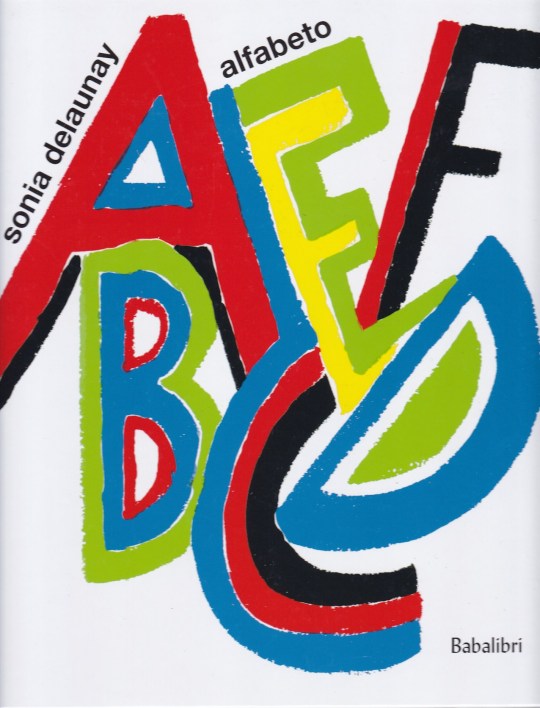
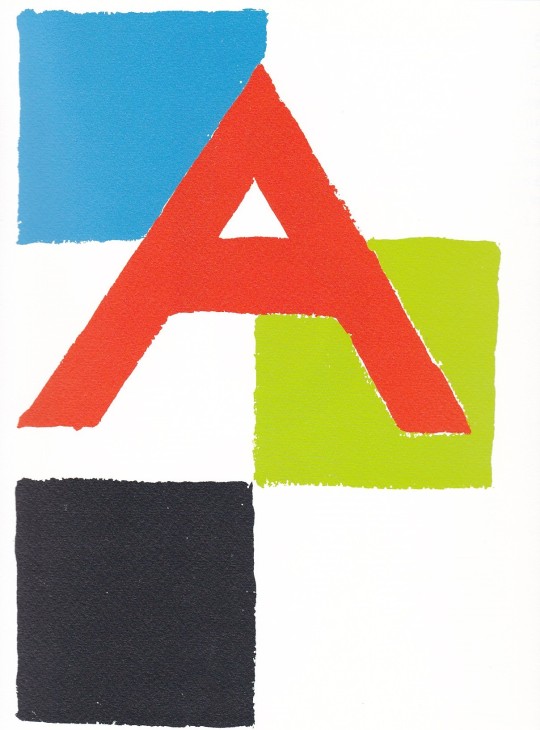


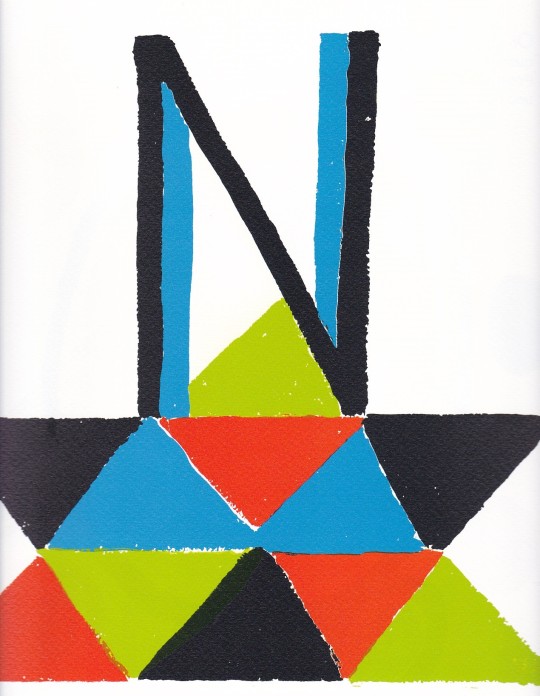

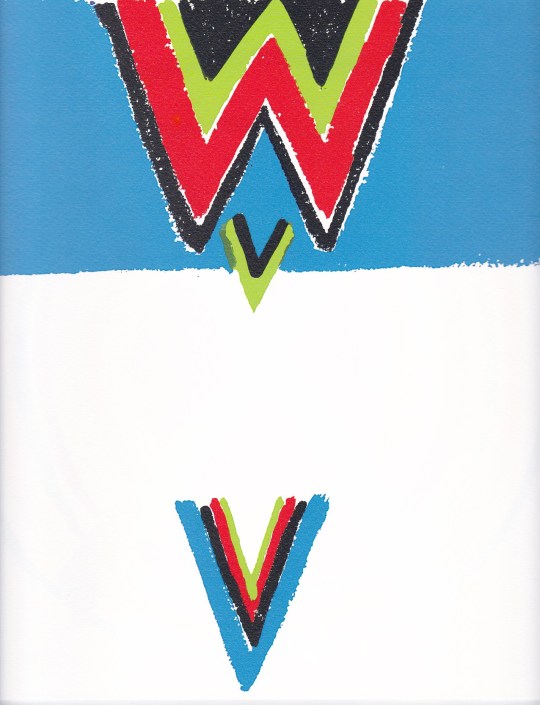
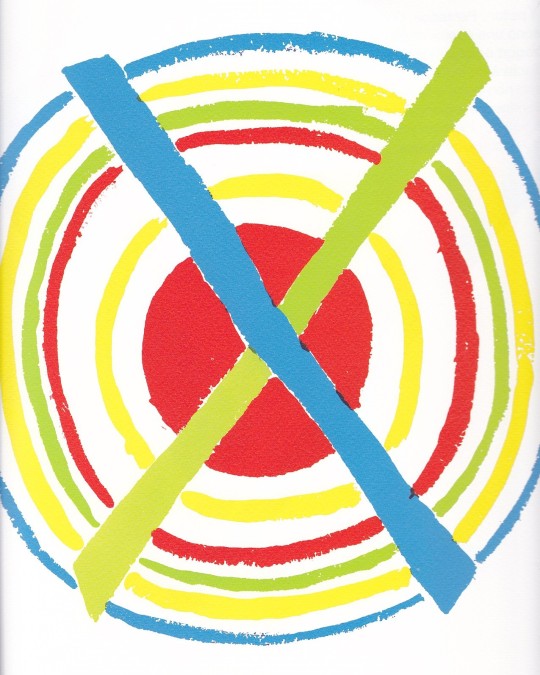
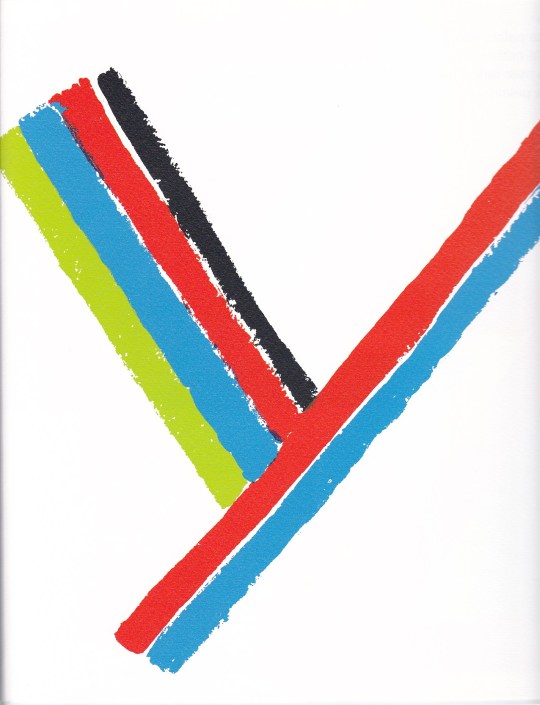

Sonia Delaunay Alfabeto
con una raccolta di filastrocche popolari italiane
Babalibri, Milano 2010, 64 pagine, 25 x 28 cm., ISBN 9788883622281
euro 22,50
email if you want to buy :[email protected]
Non è solo un magnifico alfabeto illustrato ma un vero e proprio libro d’arte. Sonia Delaunay, pittrice in bilico tra belle arti e arti applicate, vicina al futurismo e alle avanguardie storiche del secolo scorso, nel 1970 con un entusiasmo incantatorio «dipinse» questo libro. Fu una sorpresa e un regalo all’infanzia, perché pochi sono gli artisti che comunicano la loro vera poetica al mondo dei bambini. Il successo fu enorme e ora lo riproponiamo nella versione originale, con le filastrocche popolari italiane che accompagnano lettera per lettera, le lettere dell’alfabeto. Ventisei icone che avevano anticipato il tratto grafico della pop art.
19/09/22
orders to: [email protected]
ordini a: [email protected]
twitter: @fashionbooksmi
instagram: fashionbooksmilano, designbooksmilano tumblr: fashionbooksmilano, designbooksmilano
#Sonia Dealunay#Alfabeto#filastrocche popolari italiane#ventisei icone grafiche#art books#fashionbooksmilano
3 notes
·
View notes
Link
MACERATA – Dopo la press preview organizzata nella mattinata per la stampa, le porte del Musei civici a Palazzo Buonaccorsi si sono spalancate per l’inaugurazione della mostra “Bauhaus 100: imparare, fare, pensare”, promossa dalla Regione Marche, dal Comune di Macerata, Macerata Musei e organizzata da Sistema Museo e curata da Aldo Colonetti.
Presenti alla cerimonia il sindaco Romano Carancini, l’assessore alla Cultura Stefania Monteverde, il curatore Aldo Colonetti, l’archistar Italo Rota, Maria Grazia Mattei presidente del MEET centro internazionale per la cultura digitale, Gildo Pannocchia presidente dell’Istituzione Macerata Cultura, Gianluca Trequattrini Capo del Servizio Segreteria particolare del Direttorio e comunicazione della Banca d’Italia, Gianluca Bellucci direttore Sistema Museo e Paolo Baldessarri architetto del progetto espositivo.
A cent’anni dalla fondazione della scuola che ha rivoluzionato il design e l’architettura, a Palazzo Buonaccorsi arriva una mostra che vuole recuperarne la memoria storica e ripensarne le influenze nel futuro. “Bauhaus 100: imparare, fare, pensare” desidera individuare ciò che è rimasto di quello spirito rivoluzionario e interrogarsi se è ancora possibile progettare mettendo al centro “le idee” e non “le cose”.
Macerata è il luogo ideale: uno dei pochi italiani che hanno frequentato il Bauhaus negli anni Trenta è Ivo Pannaggi, artista maceratese, poliedrico innovatore. Dal 19 luglio al 3 novembre nel museo civico di Palazzo Buonaccorsi, Palazzo Pellicani Silvestri, ex sede della Banca d’Italia, e la biblioteca comunale Mozzi Borgetti, la mostra animerà il centro storico cittadino con esposizioni e attività ed eventi collaterali.
Il progetto culturale vuole essere non solo una ricostruzione dei fatti e degli avvenimenti. Bauhaus 100: imparare, fare, pensare” vuole essere un dibattito di idee nell’organizzazione e nella definizione della “cultura materiale”, ovvero tutto ciò che rende possibile un’esistenza più razionale, senza dimenticare il ruolo fondamentale del pensieri e delle arti, strumenti necessari per tentare di disegnare il futuro.
Una mostra diffusa tra più sedi che presenta sullo stesso livello le collezioni storiche e le installazioni di artisti che guardano al futuro. “Bauhaus 100: imparare, fare, pensare” è promossa dalla Regione Marche, dal Comune di Macerata, Macerata Musei ed è organizzata da Sistema Museo con la collaborazione di ADI Associazione per il Disegno industriale – Delegazione Marche, Abruzzo, Molise, Centro Studi Pannaggi, Comune di Esanatoglia, Confindustria Macerata, Confindustria Marche, Fondazione Cassa di Risparmio della Provincia di Macerata, MEET, centro internazionale per la cultura digitale di Milano con il supporto di Fondazione Cariplo, Associazione Culturale Il Paesaggio dell’Eccellenza.
“Questa mostra poteva nascere solo a Macerata – ha detto l’assessore alla Cultura Stefania Monteverde introducendo gli interventi dei presenti – la città che ha dato i natali a Ivo Pannaggi, l’artista poliedrico che nel Novecento fu uno dei pochissimi italiani che frequentarono il Bauhaus da cui trasse ispirazioni innovative e le cui opere sono conservate ai Musei Civici di Palazzo Buonaccorsi.
Con questa mostra vogliamo dare un’opportunità per conoscere una straordinaria epoca di innovazione artistica nel Novecento e allo stesso tempo fare un omaggio a chi continua a sperimentare l’innovazione libera e coraggiosa nelle idee e nel fare. Saranno molti gli appuntamenti durante l’apertura della mostra per scoprire lo spirito delle nuove imprese creative e del nuovo artigianato 4.0,”.
“Macerata celebra i 100 anni dalla nascita del Bauhaus con il coraggioso spirito di sperimentazione che connota la sua indole di città creativa – ha affermato invece il sindaco Romano Carancini -. La propensione alla ricerca e l’attitudine a varcare terreni inediti ci permettono oggi di saggiare un percorso che proietta il presente verso il futuro. Il valore di questa scelta, di allestire una mostra dedicata al Bauhaus, il più famoso esperimento nel campo dell’educazione artistica che si sia compiuto in epoca moderna, si sposa con la politica culturale che l’Amministrazione comunale ha portato avanti in questi dieci anni.
E non è una scelta casuale ma legata a Ivo Pannaggi, al suo rapporto con la città ed è un’occasione per ricordare che una sezione dei Musei civici è dedicata a lui e alla sua arte. Pannaggi incarna l’indole di questo territorio che è poliedrico, curioso, laborioso e attento alle esigenze del vivere umano, dove l’industria non tradisce i tratti essenziali degli antichi mestieri, si aggiorna e progredisce. Non celebriamo oggi il centenario di una scuola ma un modello, la forza di un’idea che vive, che continua, si rigenera prendendo spinta dal passato e guardando al futuro.
Nel percorso di crescita della città di Macerata un aspetto fondamentale è stato la partecipazione, la condivisione il fare rete nelle idee e nelle visioni e la partecipazione era un elemento fondante della didattica del Bauhaus: l’unione delle arti, non più divise tra loro, si fa simbolo ed espressione di un’unica volontà creatrice. Macerata, città creativa, ancora una volta diventa scenario di un’inedita esperienza che consiste nel sapere recuperare le buone idee del passato per riportarle al presente dando loro un nuovo respiro”.
La parola è passata poi al presidente dell’Istituzione Macerata Cultura Gildo Pannocchia che per primo ha lanciato l’idea di allestire una mostra dedicata al Bauhaus “L’idea da sola – ha detto – non dice nulla se non cade in un terreno fertile. Nel nostro caso il consiglio di amministrazione dell’Istituzione l’ha fatta sua e ha iniziato a lavorare per realizzarla. Il progetto ha così preso forma, ma per dare l’impronta abbiamo chiamato Aldo Colonetti”.
Il sindaco Romano Carancini ha ringraziato Gian Luca Treequattrini per il ruolo che ha svolto nel rapporto con la Banca d’Italia, per fare in modo che Palazzo Pellicani Silvestri potesse essere un’altra sede della mostra diffusa.
“Da un punto di vista personale Macerata per me ha rappresentato un tuffo nel passato – ha detto Trequattrini- perché in questa città ci sono nato. Macerata per Banca d’Italia è una connessione forte, ha un significato particolare legato soprattutto alla figura di Carlo Azelio Ciampi che ha vissuto qui 10 anni. La vicinanza di Banca d’Italia con questo territorio, vittima del sisma, è forte. Ha fatto molto e ha in animo di fare altro. La sede di Macerata è stata una delle,prime a chiudere e ci è sembrato doveroso e importante mettere il palazzo a disposizione della città”.
A raccontare le genersi e i contenuti della mostra è stato il curatore. “La mostra Bauhaus 100: imparare, fare, pensare non è soltanto una ricostruzione storica della più importante scuola di progettazione del XX secolo in occasione del centenario. Rappresenta un grande viaggio nell’utopia, dalla Germania al mondo, fino ad arrivare a Macerata – ha detto Aldo Colonetti-, dove è nato Ivo Pannaggi, un protagonista delle arti applicate italiane, viaggiatore eclettico tra le Marche, la Germania e il Nord Europa.
E’ in questo spirito indiziario che è nato il progetto; dai documenti originali, provenienti dalla straordinaria collezione storica di un architetto come italo Rota che, fino dall’inizio di questa avventura, ha colto pienamente questo viaggio nelle avanguardie nel suo significato più attuale, ovvero da dove veniamo e soprattutto dove andremo. Ecco allora, dopo i materiali storici, mai come oggi vivi e fondamentali per disegnare il futuro, l’incontro con la cultura digitale, attraverso la collaborazione con Maria Grazia Mattei e il MEET, con quattro installazioni di artisti e progettisti che, in una realtà solo apparentemente virtuale, ci raccontano di un linguaggio che non può far a meno di dialogare con la grande avventura “analogica” del Bauhaus.
Le radici della nostra modernità risiedono nel dialogo tra saperi diversi e, soprattutto, tra l’intelligenza delle mani e un pensiero che si sviluppa “facendo le cose”. Palazzo Buonaccorsi ospita, nei suoi straordinari spazi, questo doppio percorso, per approdare poi, direttamente nelle stanze di Pannaggi, alle quali si arriva, vedendo per la prima volta, alcune opere rare del terzo italiano, insieme a Augusto Cernigo, Alfredo Bortoluzzi che hanno esperimentato direttamente le aule e i laboratori della scuola.
Ma Bauhaus significa anche contemporaneità, in particolare per quanto riguarda due capolavori del design industriale che ancora oggi sono presenti nelle nostre case: la sedia Wassily di Marcel Breurer e la poltrona Barcellona di Mies van del Rohe, per testimoniare che il passato è tra noi, anche se spesse volte, non ne siamo consapevoli, travolti come siamo dalla contingenza di un presente che ha annullato il futuro. La mostra continua, sviluppandosi nella città antica, con altre due tappe: Palazzo Pellicani Silvestri, ex sede della Banca d’Italia, dove protagonista è il territorio delle Marche, fotografato da una serie di autori, coordinati da una grande maestro, Gabriele Basilico, che amava questa terra, interpretando così un concetto che potremmo definire di derivazione “Bauhaus”.
Ovvero, come scriveva Giorgio Fuà, “un’industrializzazione senza fratture”, dove il paesaggio mantiene la sua funzione unitaria e riconoscibile. L’altro protagonista di questa seconda tappa è l’opera di Alberto Meda, realizzata in scala reale per la prima volta, “Lightness”: la leggerezza affidata a una composizione dove le parole diventano architettura. E’ il simbolo più coerente e rappresentativo di un’idea di Bauhaus in grado di segnare una direzione progettuale nel segno della sostenibilità.
Il percorso si conclude con la terza tappa ospitata nella Biblioteca Comunale Mozzi Borgetti è rappresentata da una serie di copertine della rivista culturale “La Lettura” de Il Corriere della Sera che ha deciso di dedicare l’immagine di ogni numero ad artisti, architetti, grafici, illustratori, designer, fotografici, in sostanza rimettendo al centro, oggi, l’idea fondamentale da cui nel 1919 nacque il Bauhaus. Come scriveva Giulio Carlo Argan nel suo “Walter Gropius e la Bauhaus”, “l’arte come perenne volontà di coscienza, è l’antitesi di ogni brutale volontà di potenza, spirito di pace contro spirito di guerra, virtù contro furore”. Parole attuali come non mai: abbiamo bisogno ancora di tanto Bauhaus, perché nei suoi indizi, sparsi nel mondo, nella vita di tutti i giorni, possiamo ritrovare il nostro destino, senza nostalgia né gratuiti storicismi”.
“Raccontare le radici del nuovo è questa una delle missioni di MEET, centro internazionale per la cultura digitale nato a Milano nel 2018 con il supporto di Fondazione Cariplo. Abbiamo aderito con grande gioia alla “chiamata” di Aldo Colonetti perché Bauhaus 100: imparare, fare, pensare guarda al passato come innesco del futuro – ha affermato Maria Grazia Mattei presidente MEET – .A cento anni dalla sua nascita, la scuola tedesca voluta da Gropius ispira e plasma il lavoro di artisti e creativi di tutto il mondo, come raccontiamo nella sezione Digital Landscapes. Attraverso quattro progetti molto diversi fra loro viaggiamo per il mondo, da Hong Kong a Berlino, passando per Miami e Rimini, rintracciando parallelismi ed eredità che ibridano i codici del Bauhaus con i linguaggi e i processi dell’era digitale. Citando Gropius, potremmo dire che il “nuovo edificio del futuro” ha nella Digital Disruption un elemento fondante. Questa mostra consente di accoglierlo ed interpretarlo come ingrediente culturale di un processo di cambiamento globale e paradigmatico”.
A chiudere la serie di interventi è stato Gianluca Bellucci, direttore di Sistema Museo: “Abbiamo lavorato molto per questa mostra, l’abbiamo pensata, progettata e costruita. Raccontare un oggetto complesso come Bauhaus non è facile, speriamo di esserci riusciti”.
Nell’aprile del 1919 un volantino annunciava la fondazione di una nuova scuola con l’obiettivo di unificare l’Accademia delle Belle Arti e la scuola di artigianato artistico di Weimar. Dopo 100 anni, l’insegnamento del Bauhaus rimane vivo, soprattutto nella sua vocazione di relazionarsi con il sistema produttivo e le sue dimensioni politiche e sociali.
Le Marche rappresentano un grande laboratorio unico sul piano territoriale. In particolare quel modello di sviluppo economico che Giorgio Fuà ha analizzato, descritto e reso noto in tutto il mondo e che, con le sue parole, potrebbe definirsi “industrializzazione diffusa senza fratture” dove le Marche e soprattutto Macerata non dimenticano mai la funzione fondamentale delle arti, dalla pittura all’architettura, dal teatro all’opera.
Il progetto espositivo è curato da Baldessari Baldessari. La mostra si articola in tre momenti, tra il museo civico di Palazzo Buonaccorsi, la Biblioteca comunale Mozzi Borgetti e Palazzo Pellicani Silvestri, ex sede della Banca d’Italia.
Il museo civico di Palazzo Buonaccorsi ospita un percorso che parte da una suggestiva installazione luminosa ispirata ai colori del Bauhaus e curata da iGuzzini illuminazione, sponsor tecnico, e propone al primo piano i documenti fondativi originali del movimento, selezionati dalla preziosa collezione di Italo Rota, che ne è anche curatore. In mostra le storiche testimonianze per raccontare come il Bauhaus si è presentato al mondo per riuscire nella sua missione innovatrice.
Al secondo piano, sei opere di Alfredo Bortoluzzi, artista impegnato alle origini del Bauhaus, che introducono in un suggestivo confronto con la sezione permanete dedicato a Ivo Pannaggi, pittore e architetto maceratese che ha frequentato la scuola di Walter Gropius fino alla sua chiusura voluta da Hitler nel 1933.
Nelle Sale dell’Eneide e di Ercole è allestita la sezione curata da Maria Grazia Mattei di MEET, centro internazionale per la cultura digitale di Milano, e intitolata “Digital Landscapes Corpo linguaggio azione”. Attraverso quattro installazioni di altrettanti creativi internazionali si indaga la relazione tra analogico e digitale che la scuola tedesca ha saputo intuire.
Il percorso rintraccia alcune caratteristiche fondative comuni che legano il movimento artistico nato nel 1919 alla contemporaneità digitale, come interdisciplinarità, sperimentazione di nuovi linguaggi espressivi e ibridazione di competenze tecnologiche e umanistiche con finalità non solo creative, ma anche produttive.
A Palazzo Pellicani Silvestri, ex sede della Banca d’Italia, è protagonista il paesaggio dell’industria marchigiana, in un percorso fotografico, curato dall’associazione culturale Il Paesaggio dell’Eccellenza, a cura di Alessandro Carlorosi, che racconta per immagini la relazione stretta tra industria e territorio. Da metà settembre il palazzo ospiterà “Lightness”, una grande installazione di Alberto Meda con la collaborazione di Francesco Iorio, con una serie di progetti di giovani designer della regione, curata in collaborazione con Adi, associazione per il disegno industriale – delegazione Marche, Abruzzo, Molise. di tutte le attività creative e progettuali, per cui la sua filosofia fa riferimento alla lezione del Bauhaus. Sono presenti, tra gli altri, disegni di Renzo Piano, Patti Smith, Mimmo Jodice, Mario Bellini, Mimmo Paladino, Brian Eno, John Berger, Alessandro Mendini, il tutto proprio nello spirito della scuola tedesca.
Durante la mostra è previsto un ricco programma di eventi e appuntamenti culturali sulla storia dell’arte, del design, dell’architettura, sull’artigianato 4.0, sulle media arts e sulla ricerca di modelli espressivi di nuova generazione, in collaborazione con le scuole, le università, l’Accademia di Belle Arti, le associazioni culturali, le associazioni di categoria. Ci sarà anche un concorso, una call per selezionare prodotti della manifattura artigianale che saranno poi i protagonisti di una mostra.
Info: www.macerataculture.it, tel 0733 256361 italytolive.it
0 notes